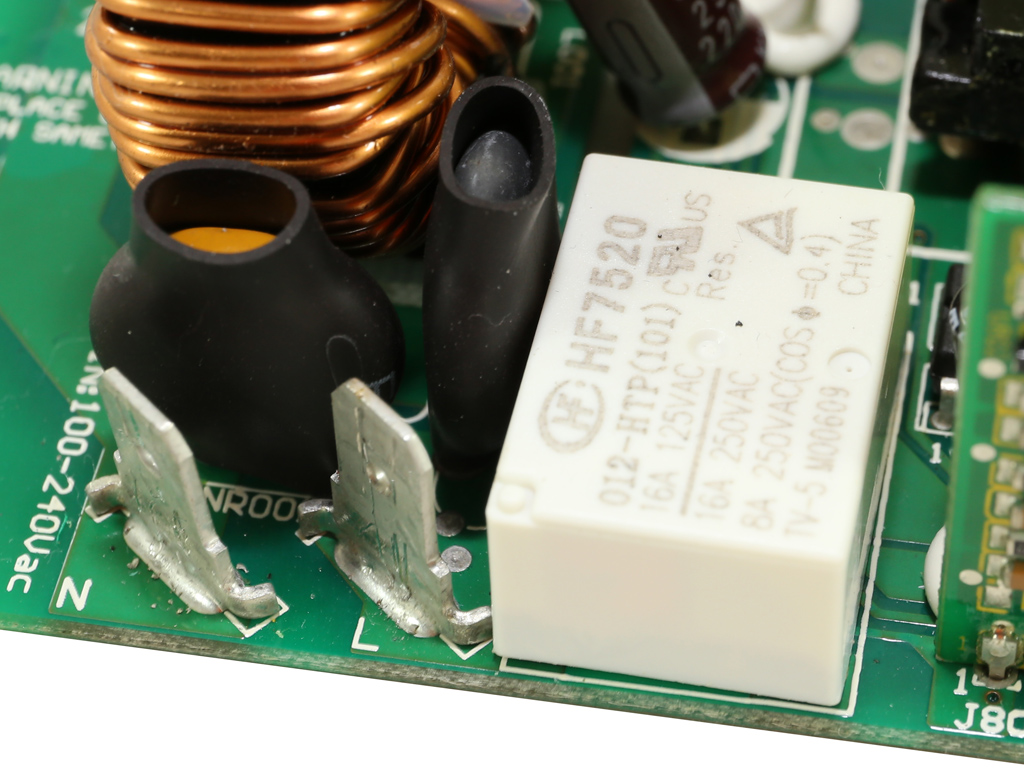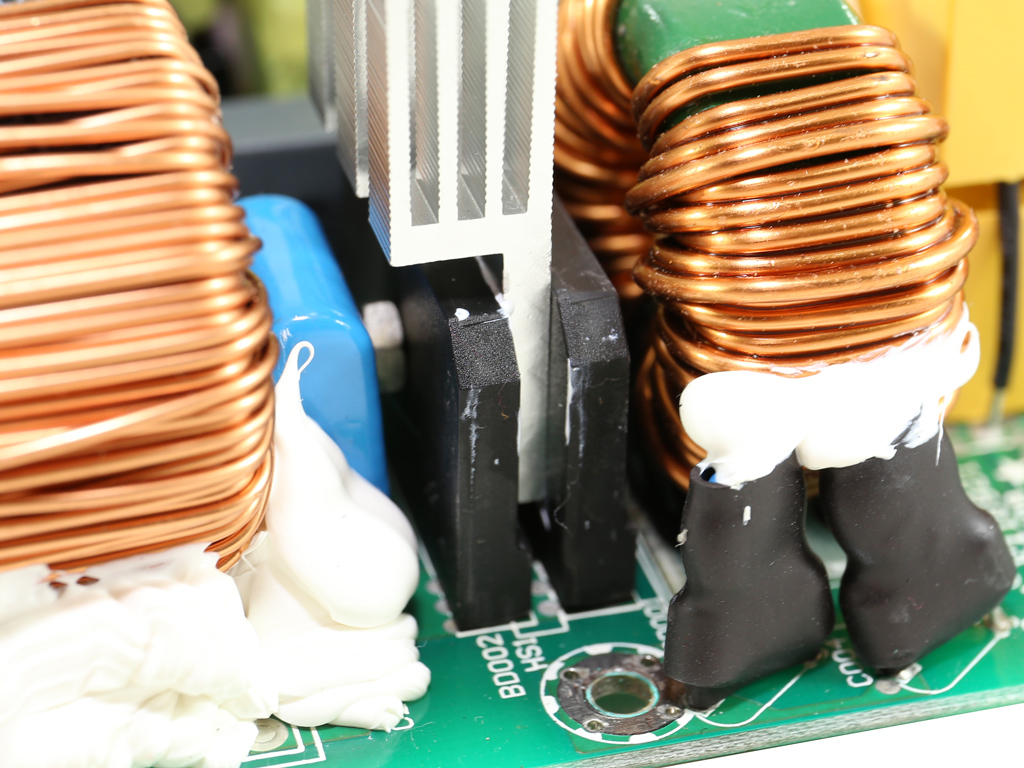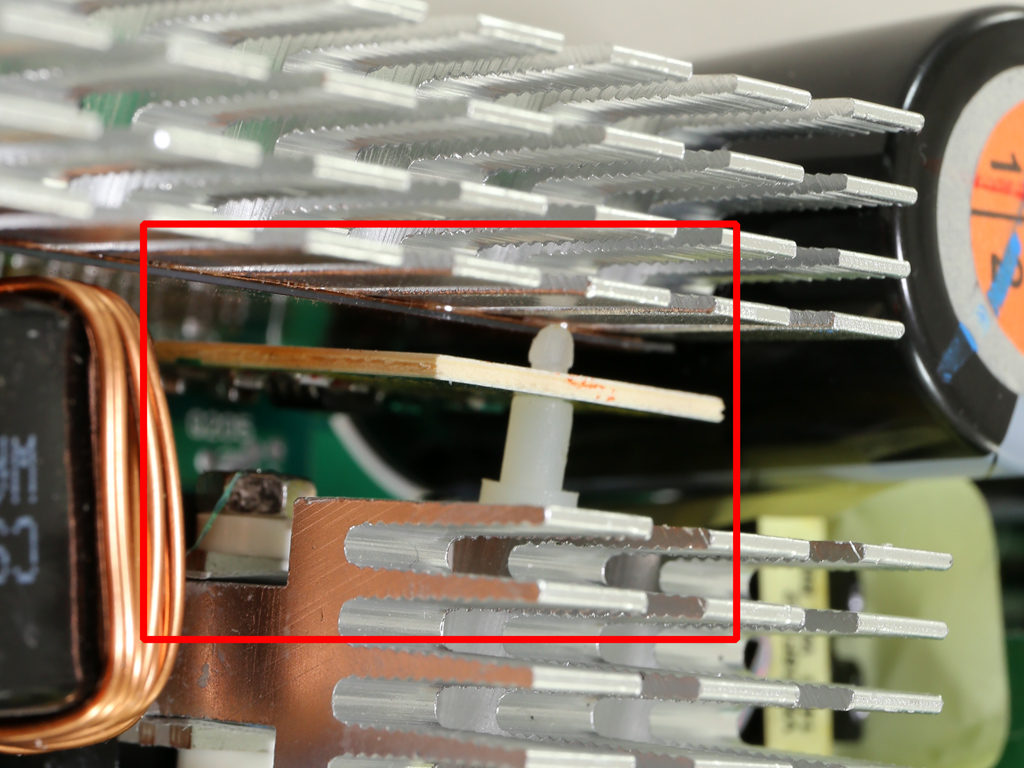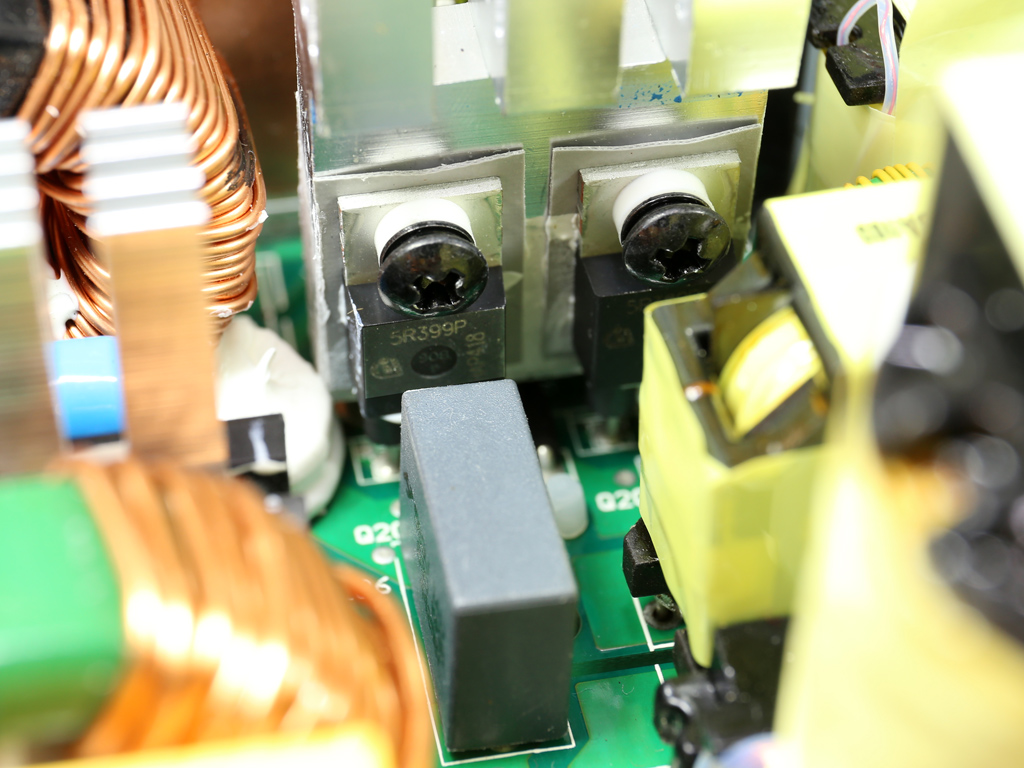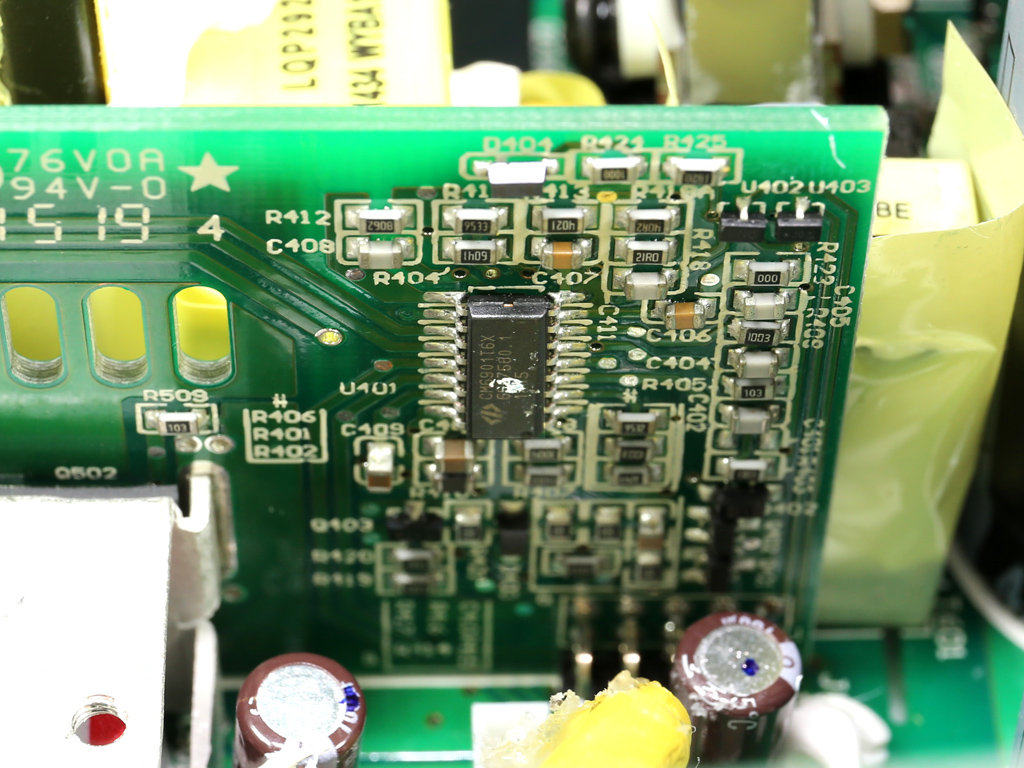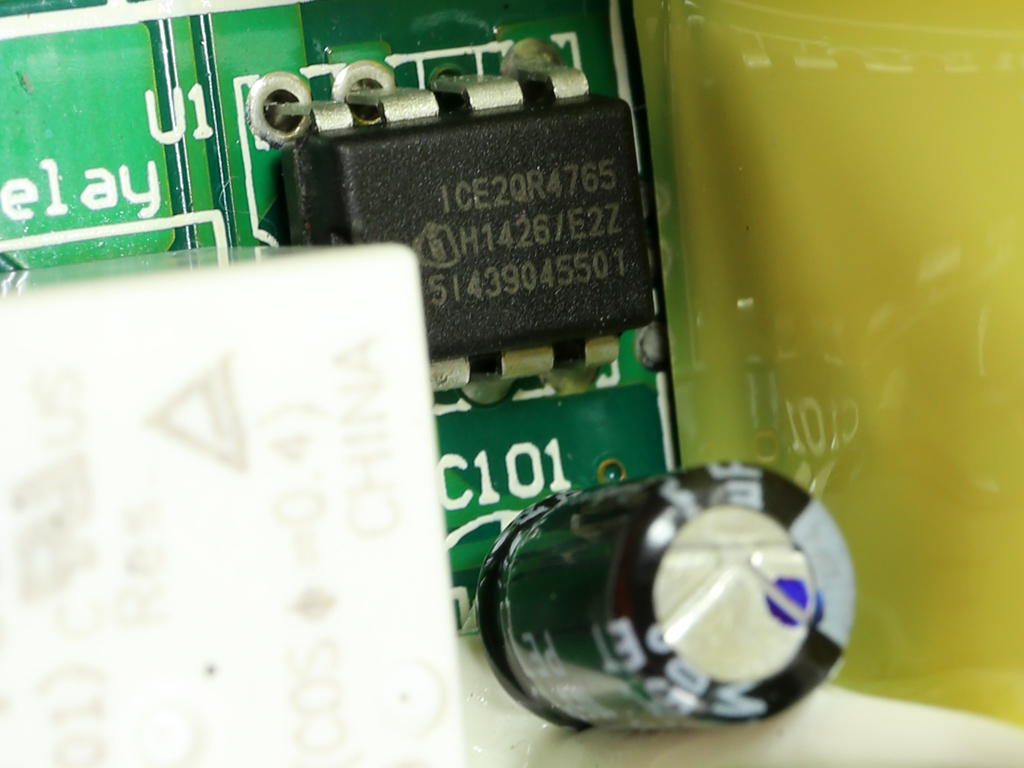XFX XTR Series 850W PSU Review
XFX cooperates closely with Seasonic for its PSU products. That's a major advantage, since Seasonic is a top OEM. The XTR line is XFX's second-best, after the XTS family, and today's review focuses on the 850W model.
Why you can trust Tom's Hardware
A Look Inside And Component Analysis
Parts Description
Before proceeding with this page, we strongly encourage you to a look at our PSUs 101 article, which provides valuable information about PSUs and their operation, allowing you to better understand the components we're about to discuss. Our main tools for disassembling PSUs are a Thermaltronics soldering and rework station and a Hakko FR-300 desoldering gun.
| Primary Side | |
|---|---|
| Transient Filter | 4x Y caps, 3x X caps, 2x CM chokes, 1x DM choke, 1x MOV |
| Inrush Protection | NTC Thermistor & Relay |
| Bridge Rectifier(s) | 2x GBJ1506 (600V, 15A @ 100 °C) |
| APFC MOSFETs | 2x Infineon IPP60R199CP (650V, 10A @ 100 °C, 0.199Ω) |
| APFC Boost Diode | 1x SCS110AG (600V, 10A @ 117 °C) |
| Hold-up Cap(s) | 2x Rubycon (420V, 330uF each or 660uF combined, 2000h @ 105 °C, MXH) |
| Main Switchers | 4x Infineon IPP50R399CP (560V, 6A @ 100 °C, 0.399Ω) |
| APFC Controller | On Semiconductor NPC1654 |
| Switching Controller | Champion CM6901 |
| Topology | Primary side: Full-Bridge & LLC Resonant Converter Secondary side: Synchronous Rectification & DC-DC converters |
| Secondary Side | |
| +12V MOSFETs | unknown number of FETs |
| 5V & 3.3V | DC-DC Converters: 6x Infineon BSC0906NS (30V, 40A @ 100 °C, 4.5mΩ) PWM Controller: APW7159 |
| Filtering Capacitors | Electrolytics: Nippon Chemi-Con (105 °C, KY, KZE) Polymers: Nippon Chemi-Con, FPCAP |
| Supervisor IC | Weltrend WT7257V & AS393 |
| Fan Model | Hong Hua HA13525H12F-Z (12V, 0.5A, 2300 RPM, Fluid Dynamic Bearing) |
| 5VSB Circuit | |
| Standby PWM Controller | ICE2QR4765 |
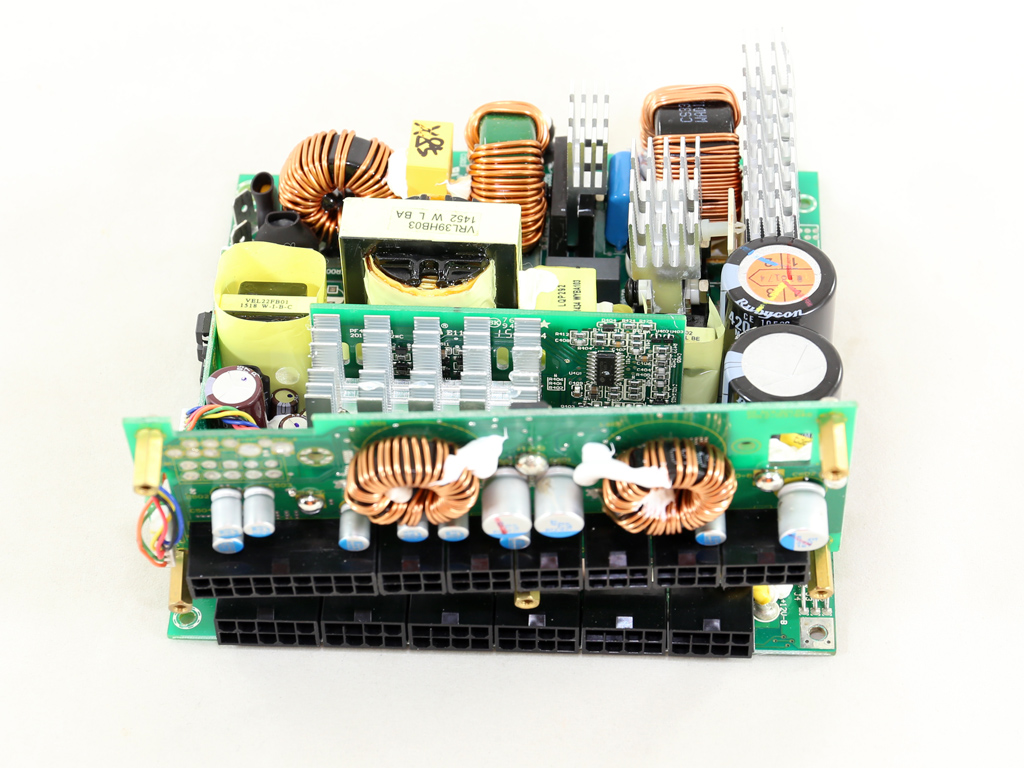
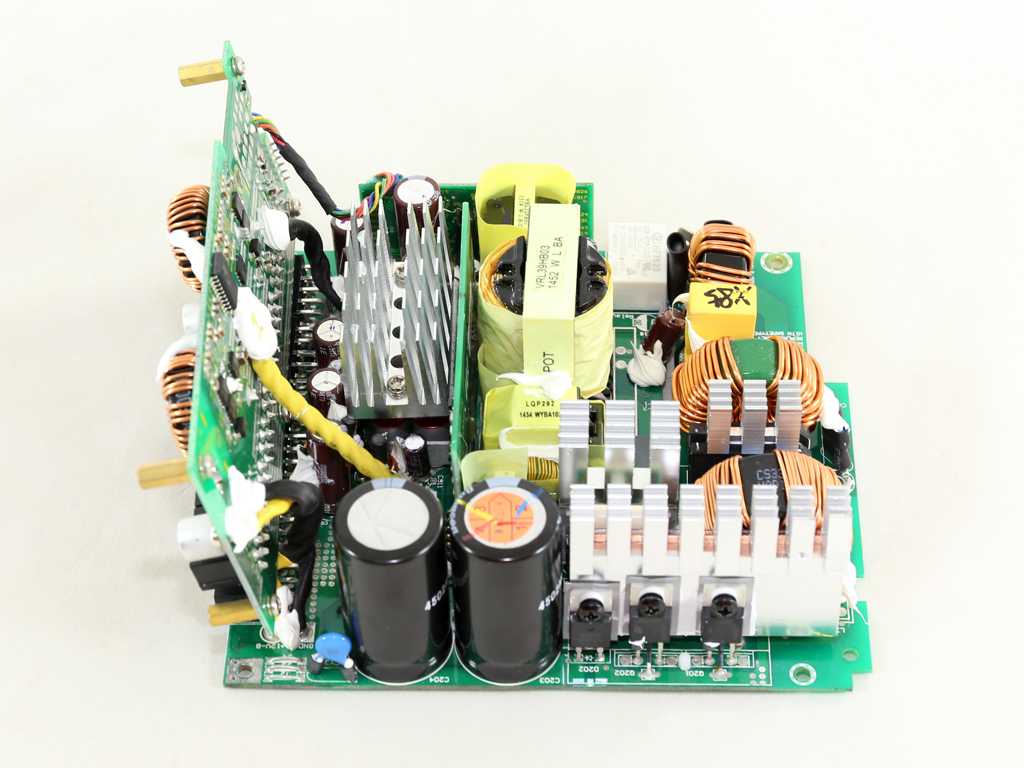
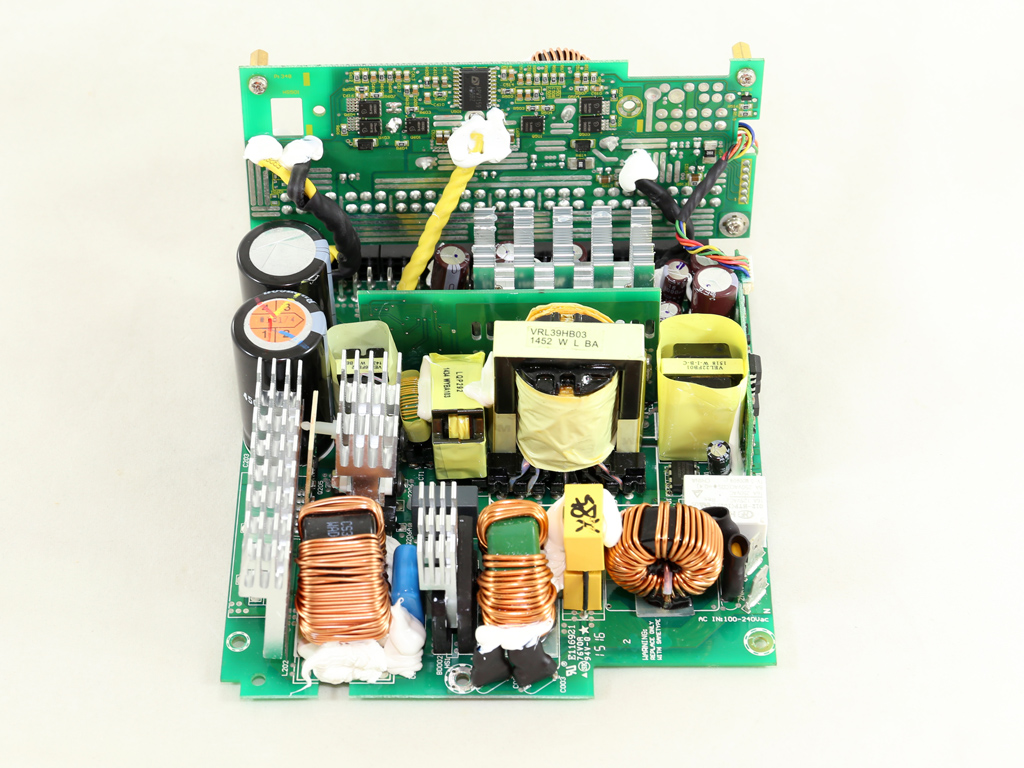
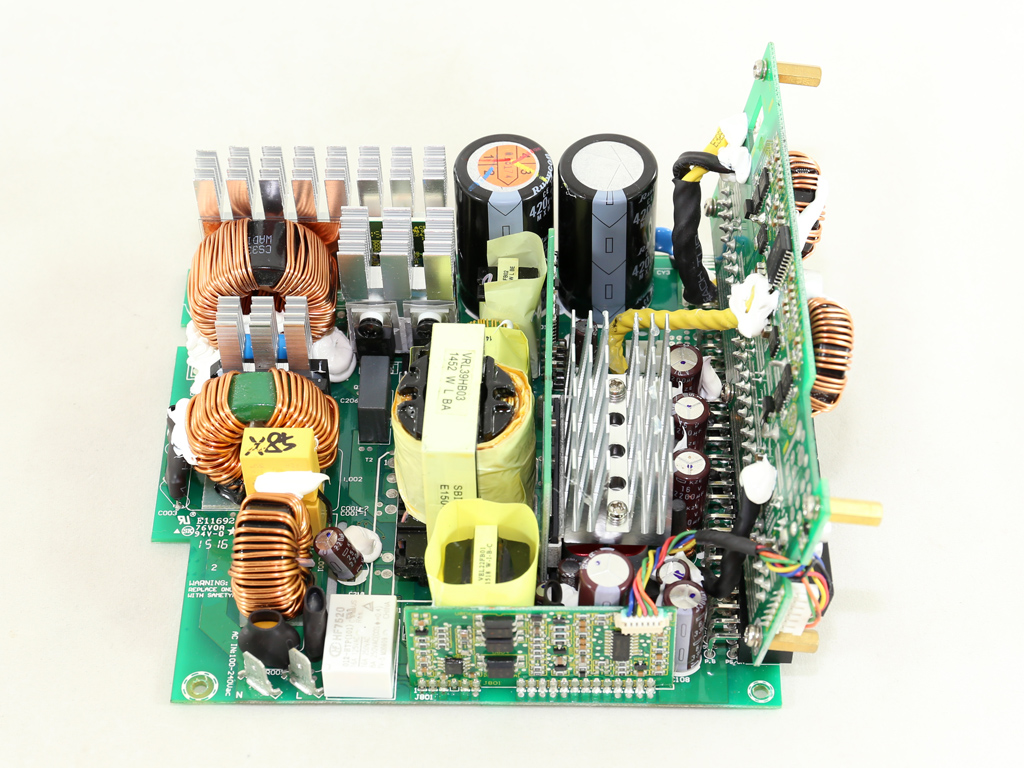
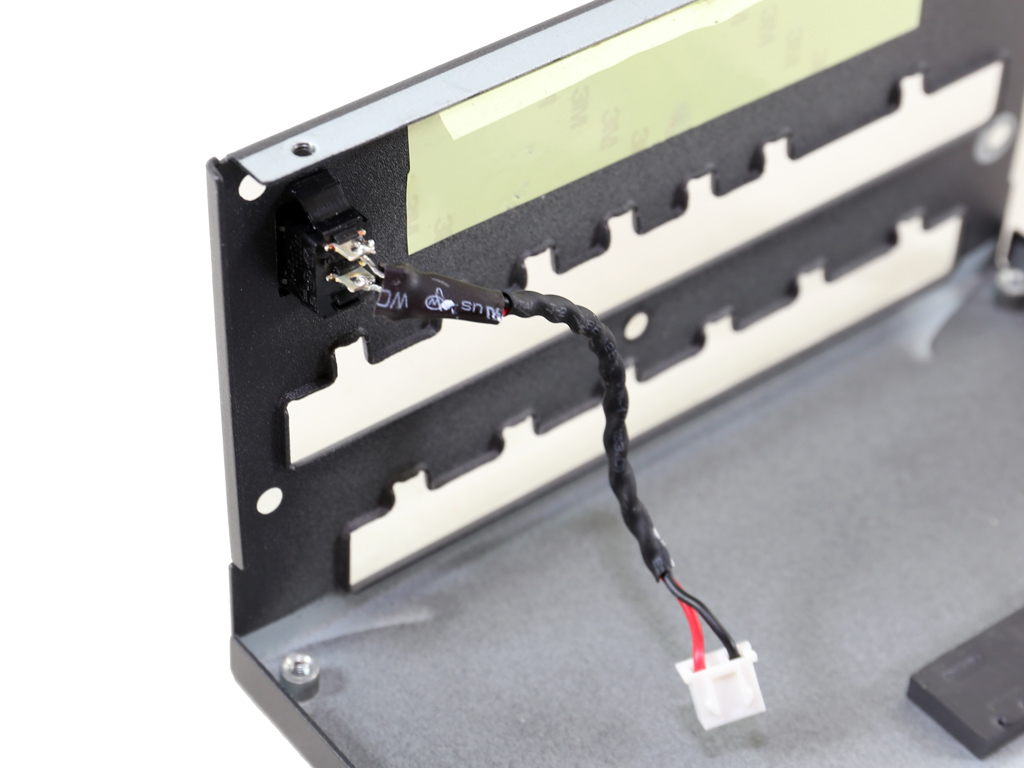
The XTR 850W utilizes Seasonic's KM3S platform (thanks to user Orion for pointing this out), which is a newer version of the KM3 design. The differences between the KM3 and KM3S platforms are limited and there is one thing that we know for sure: although the KM3 platform is several years old, it still delivers high performance, easily matching the 80 PLUS Gold-rated competition so we expect high performance from the KM3S design. A full-bridge topology is used on the primary side, along with an LLC resonant converter. On the secondary side, DC-DC converters are installed on the modular panel to decrease energy losses on cables. The less distance power has to travel, the lower the circuit's overall resistance. Less energy is consequently wasted as heat.
XFX's component quality is high. Besides Infineon FETs, Seasonic also uses Japanese caps with high temperature ratings. We would like to see better assembly quality, though. Most specific, we didn't like the view of the leaning heat sinks. This might not affect performance in any significant way, but they don't look good.
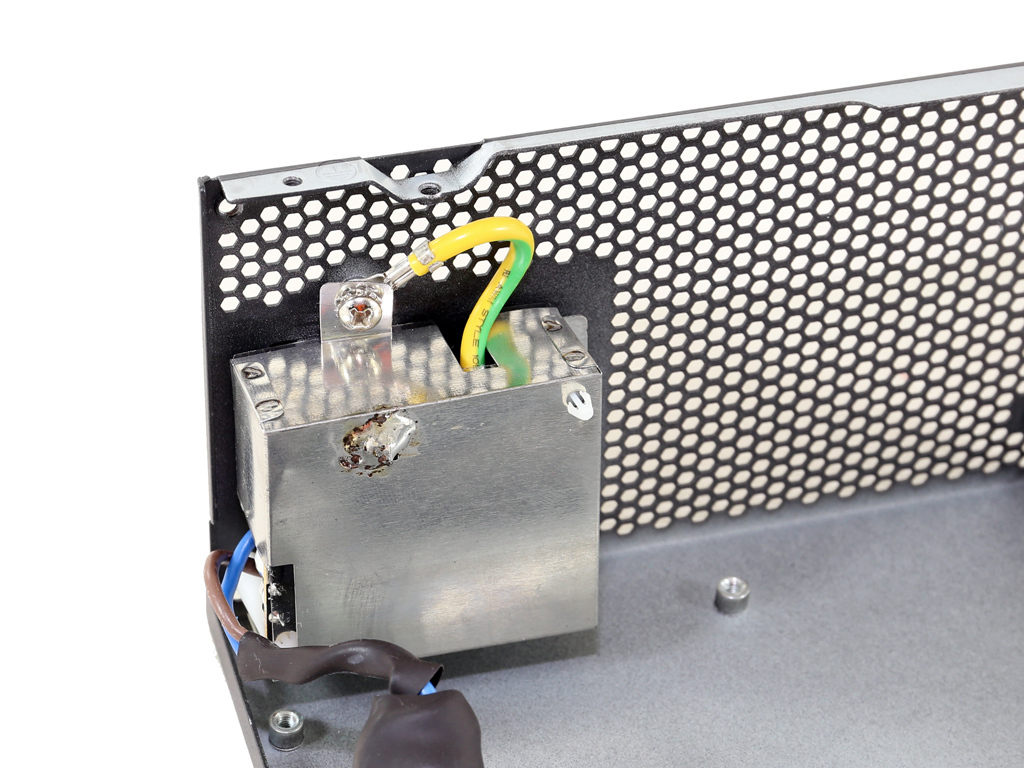
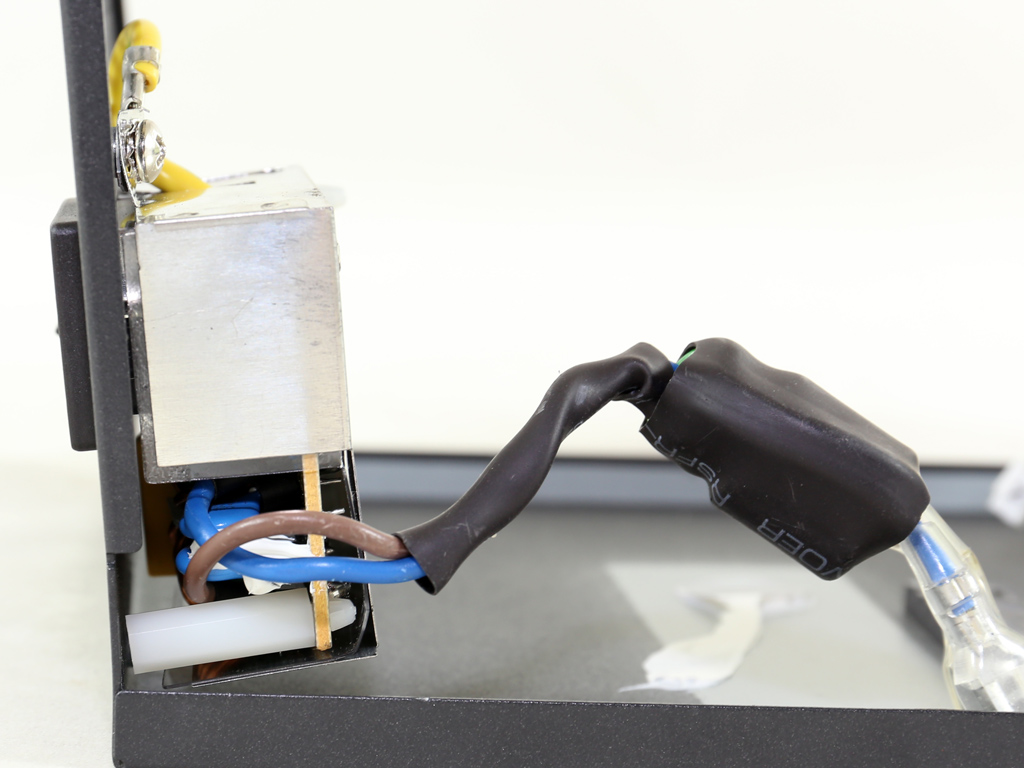
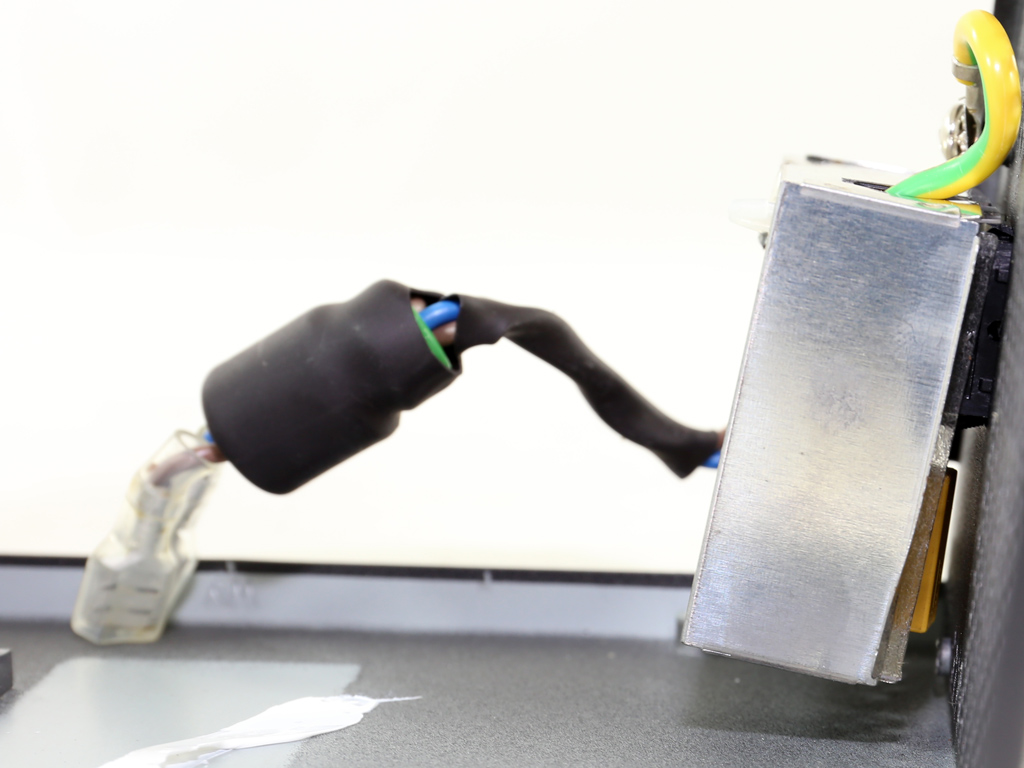
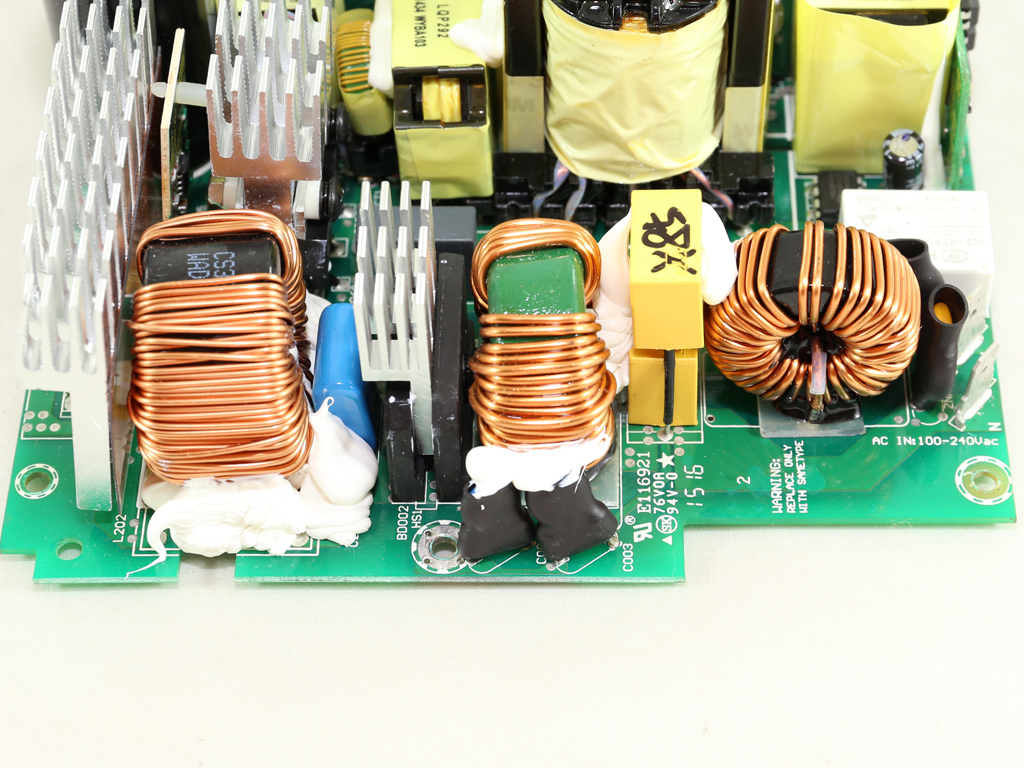
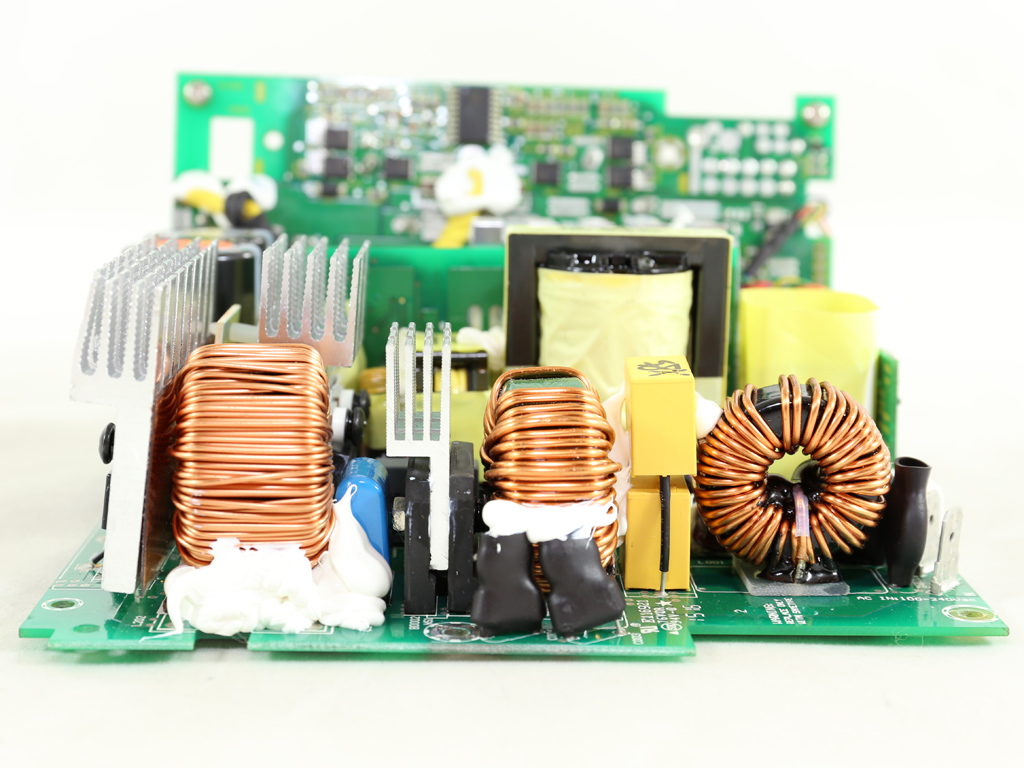
The first part of the transient filter is properly shielded by a metallic cover grounded to the chassis. This part includes a CM choke, a X cap along with a pair of Y ones. The EMI filter continues on the main PCB with two more X caps, a CM choke and a DM one, and an MOV.
An NTC thermistor along with a bypass relay protect against large inrush currents during the PSU's start-up phase.
A couple of parallel bridge rectifiers (2x GBJ1506) fully rectify the incoming AC signal. By using two rectifiers in parallel, amperage is split between them, lowering energy losses.
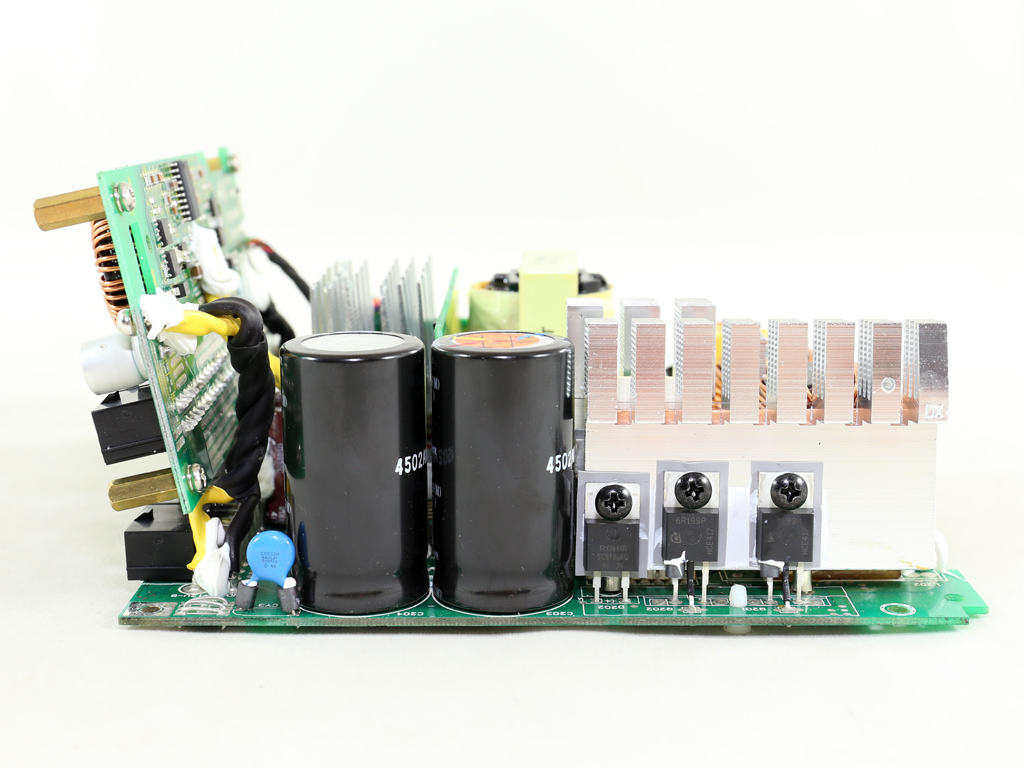
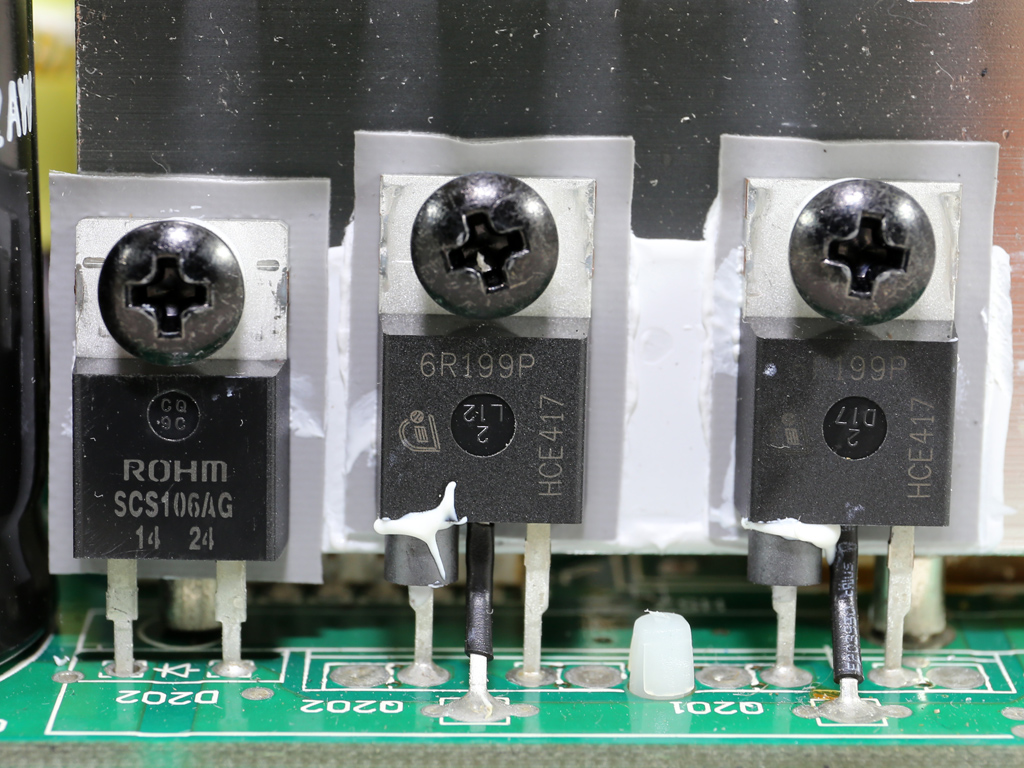
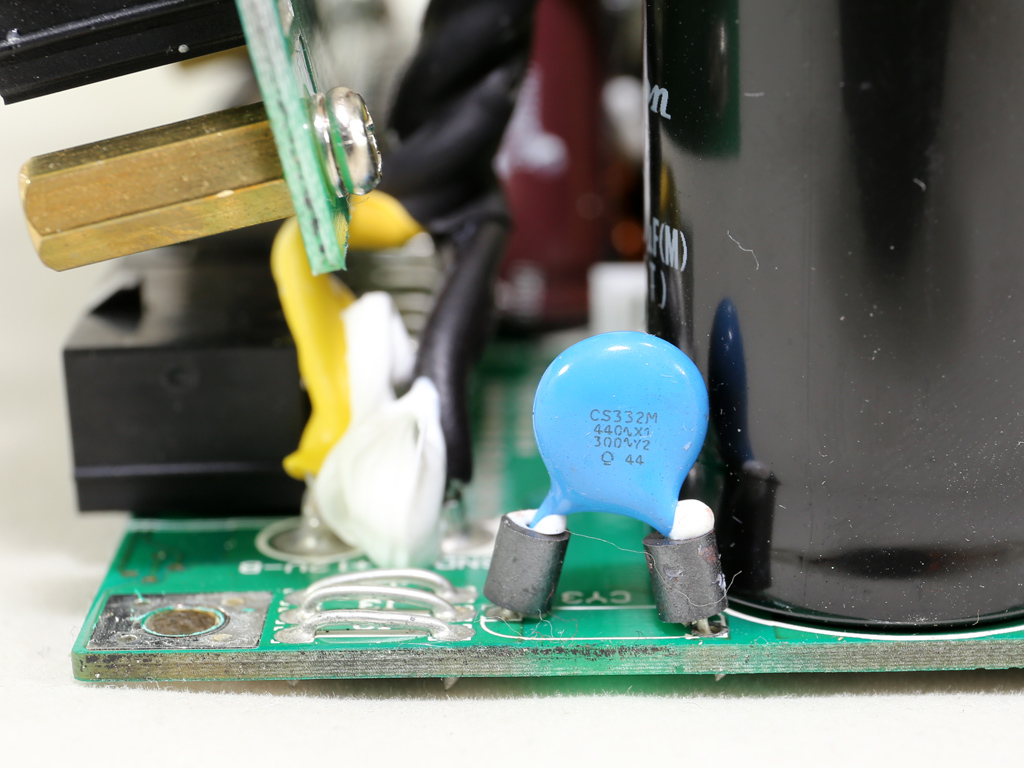

The APFC converter uses two Infineon IPP60R199CP FETs along with a single SCS110AG boost diode. The bulk caps are a pair of Rubycons (420V, 2000h @ 105 °C, MXH) that have 660uF combined capacity. Although this seems low, thanks to a proper design, you get a longer hold-up time than the ATX spec requires.
Get Tom's Hardware's best news and in-depth reviews, straight to your inbox.
The APFC controller, an NPC1654 IC, is installed on a small vertical PCB.
The main switching FETs are four Infineon IPP50R399CPs configured in a full-bridge topology. They're installed on a dedicated heat sink. An LLC resonant converter helps lower switching losses, providing a significant efficiency boost.
The LLC resonant controller is a Champion CM6901 IC and it is installed on the same PCB that houses the +12V FETs.
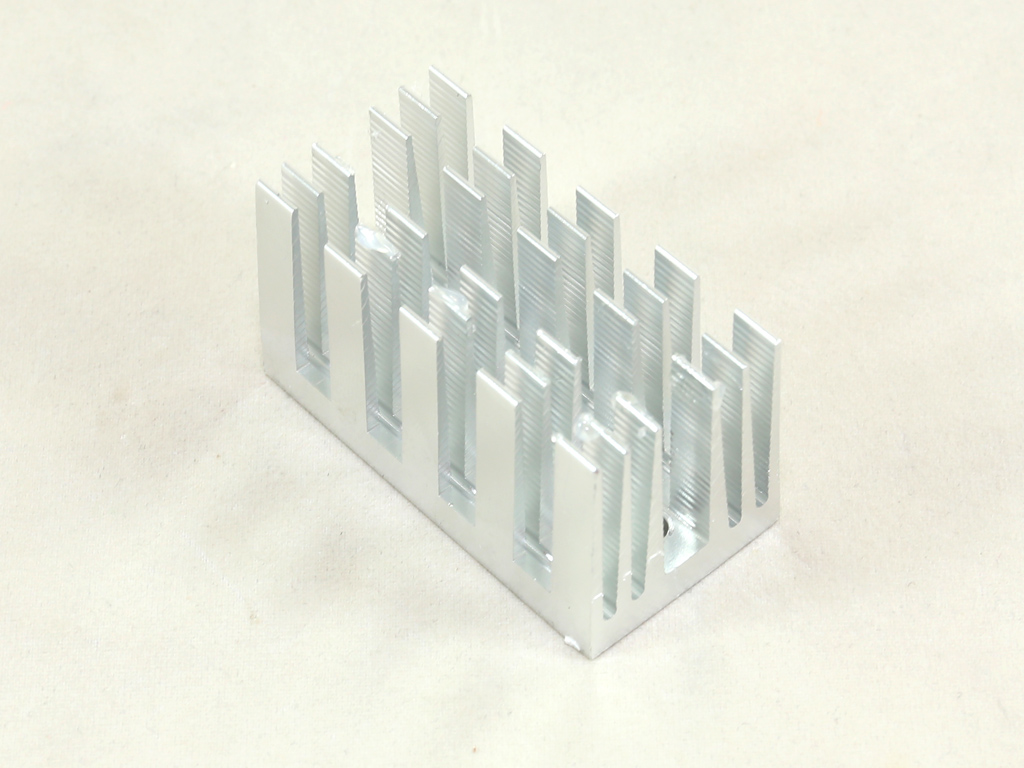
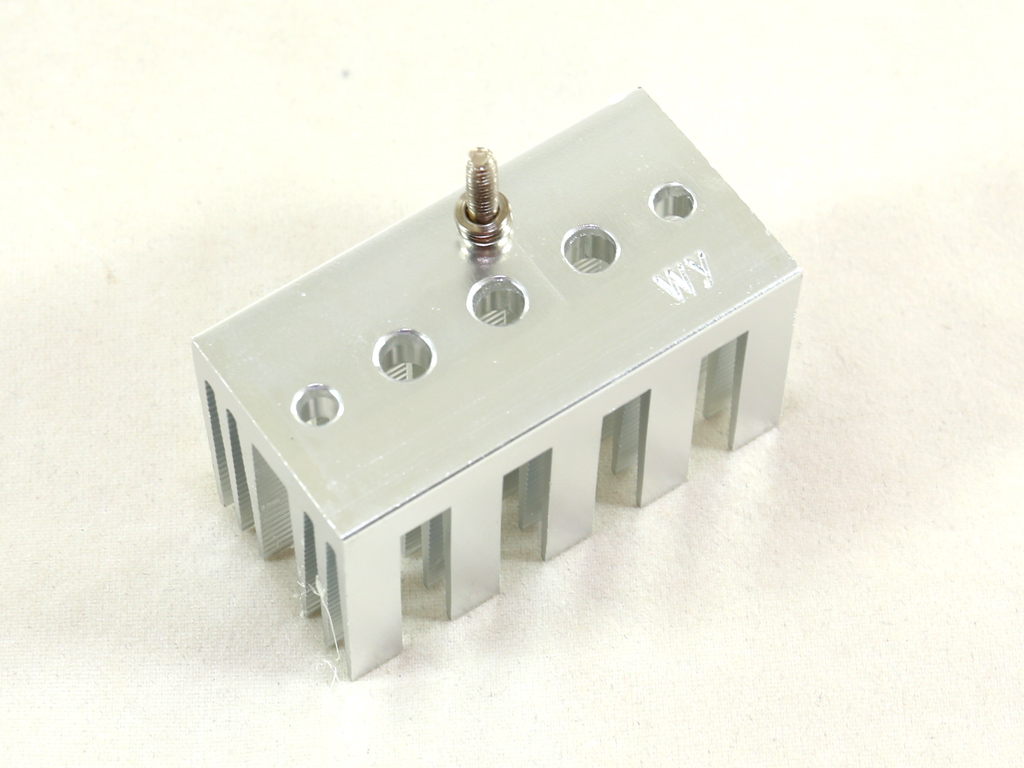
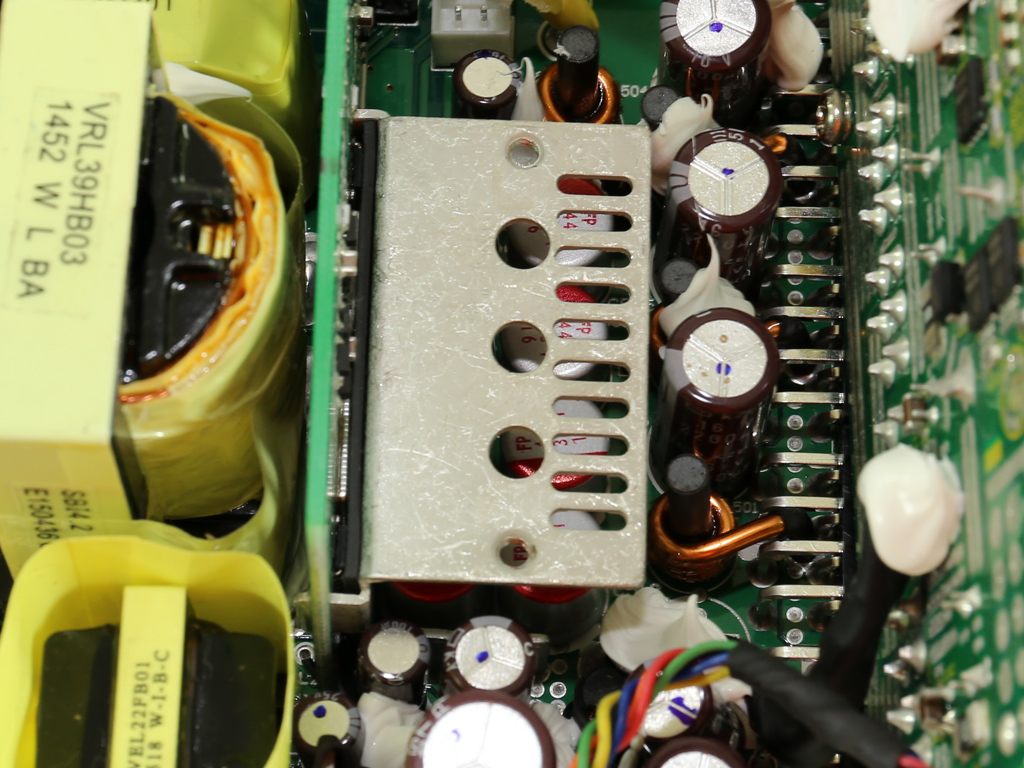
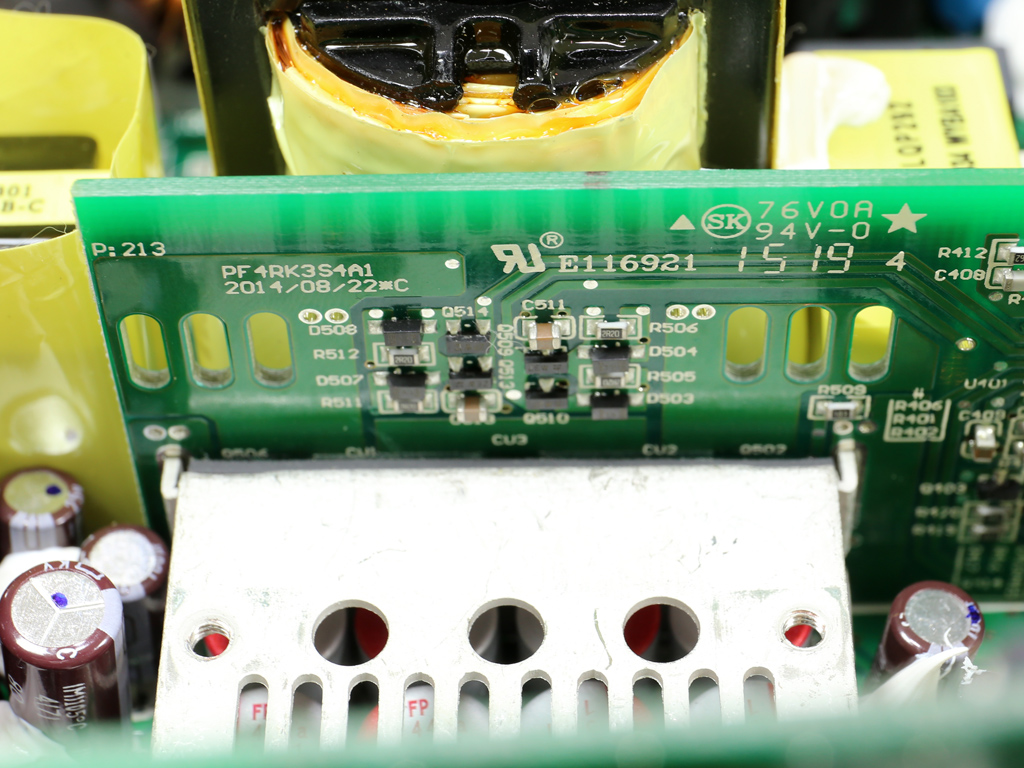
A large heat sink divided into two parts cools the FETs that generate the +12V rail. Under the lower part of this sink, we notice several FPCAP polymer caps. Unfortunately, there is no way to identify the +12V FETs without completely dismantling (and destroying) the unit.
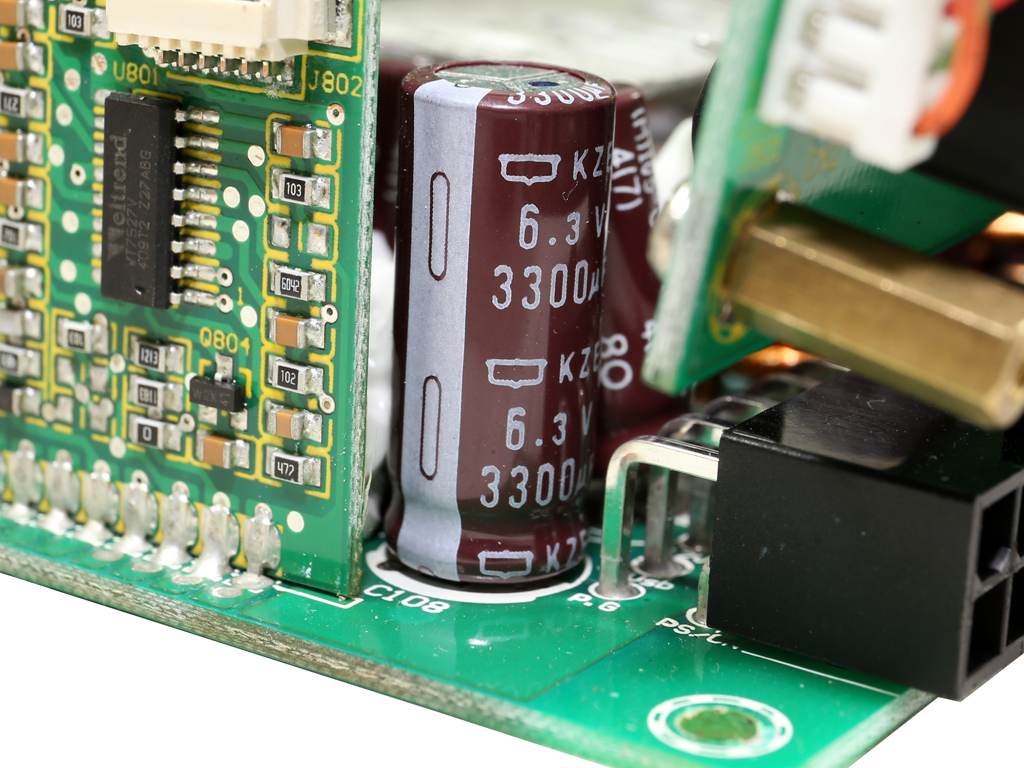
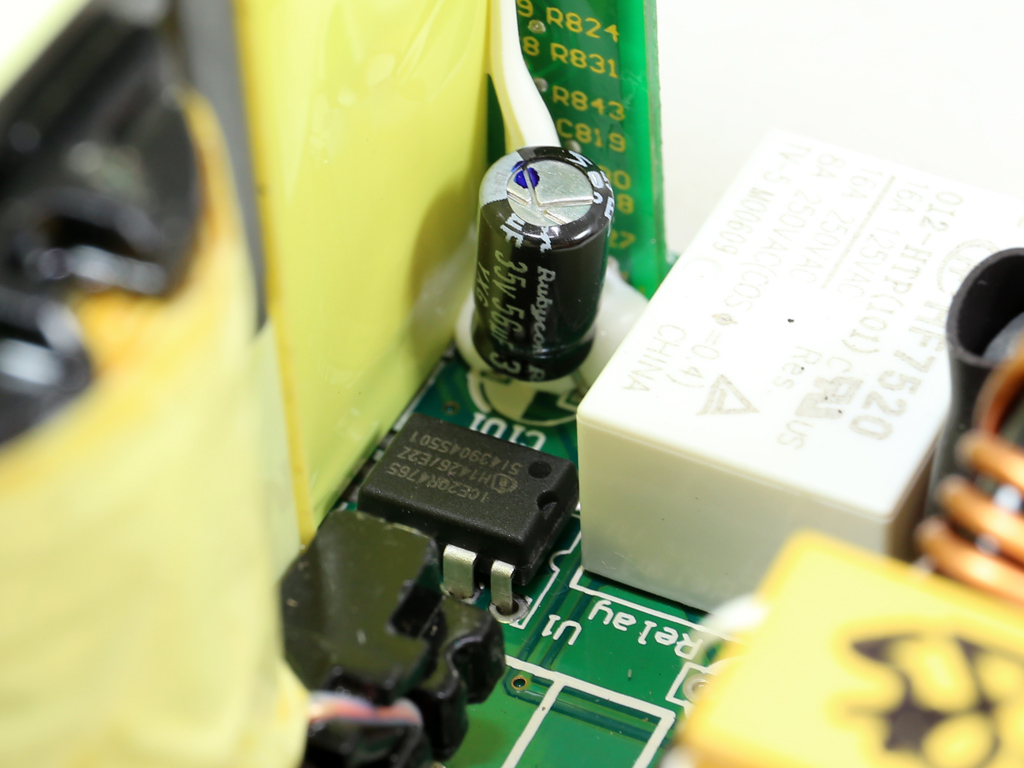
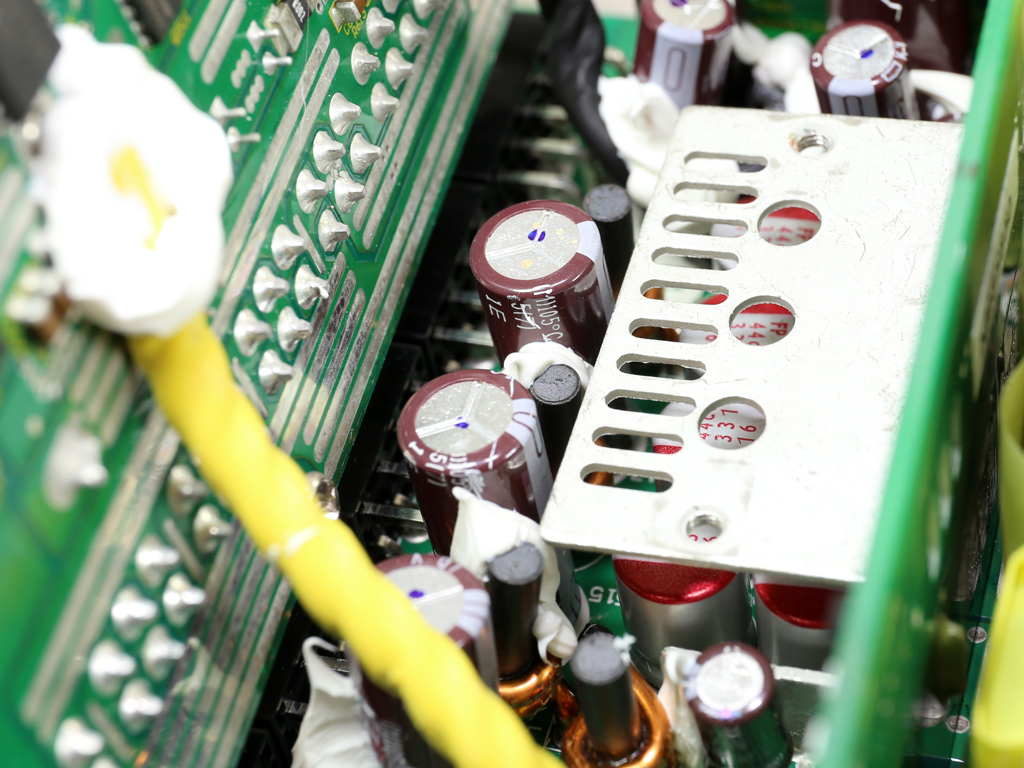
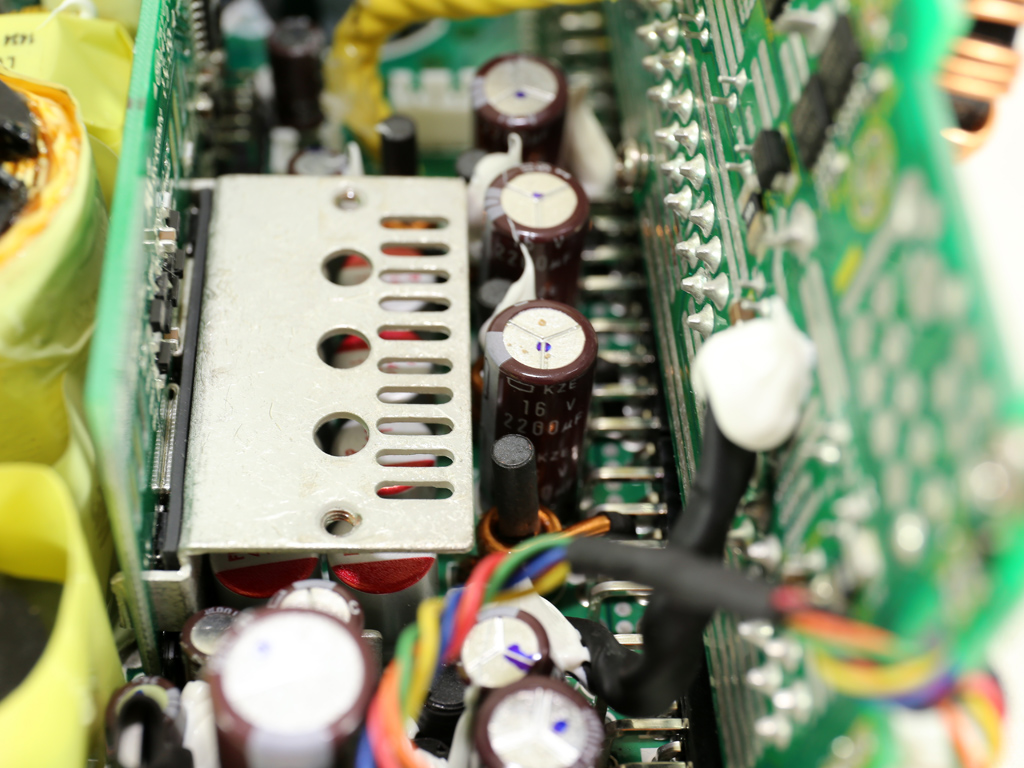
Most filtering caps on the secondary side are by Chemi-Con and are rated at 105 °C. We also spotted a small Rubycon electrolytic cap.
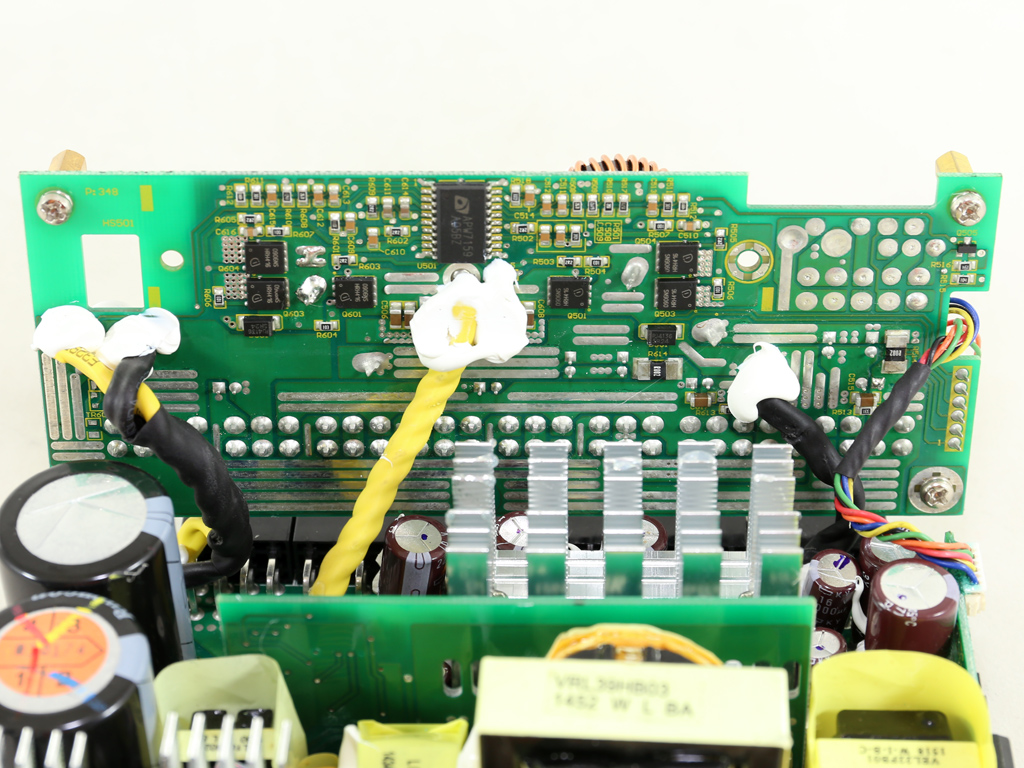
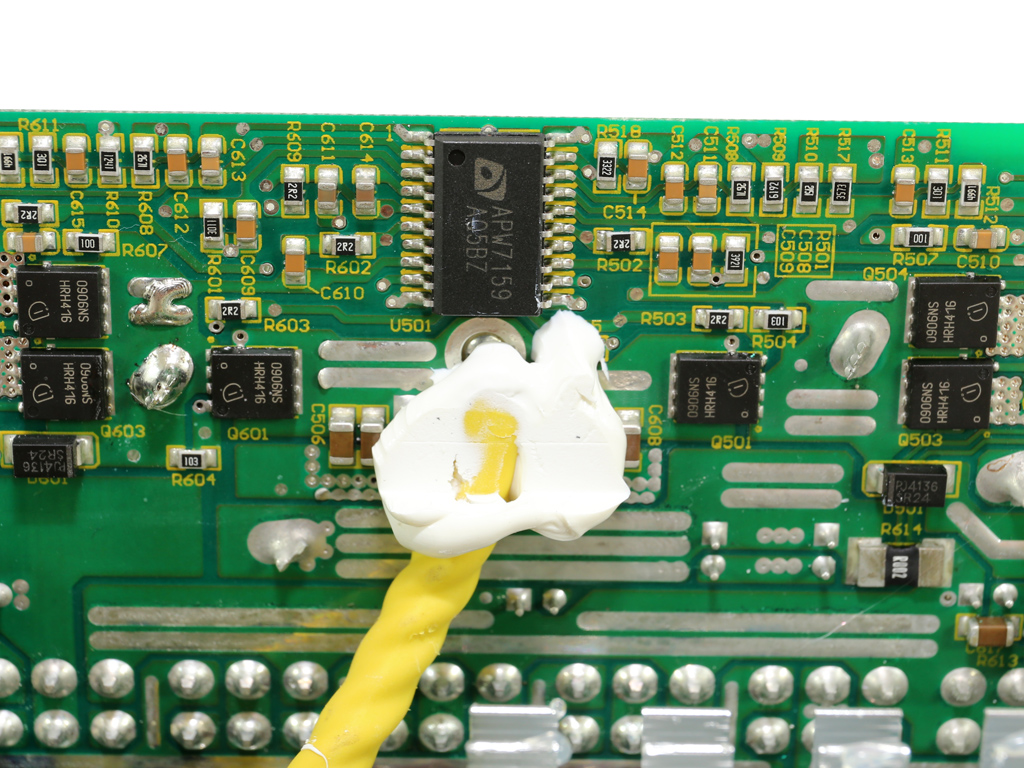
The DC-DC converters are installed on the modular PCB. Their common PWM controller is an APW7159 IC. Each converter uses three Infineon BSC0906NS FETs.
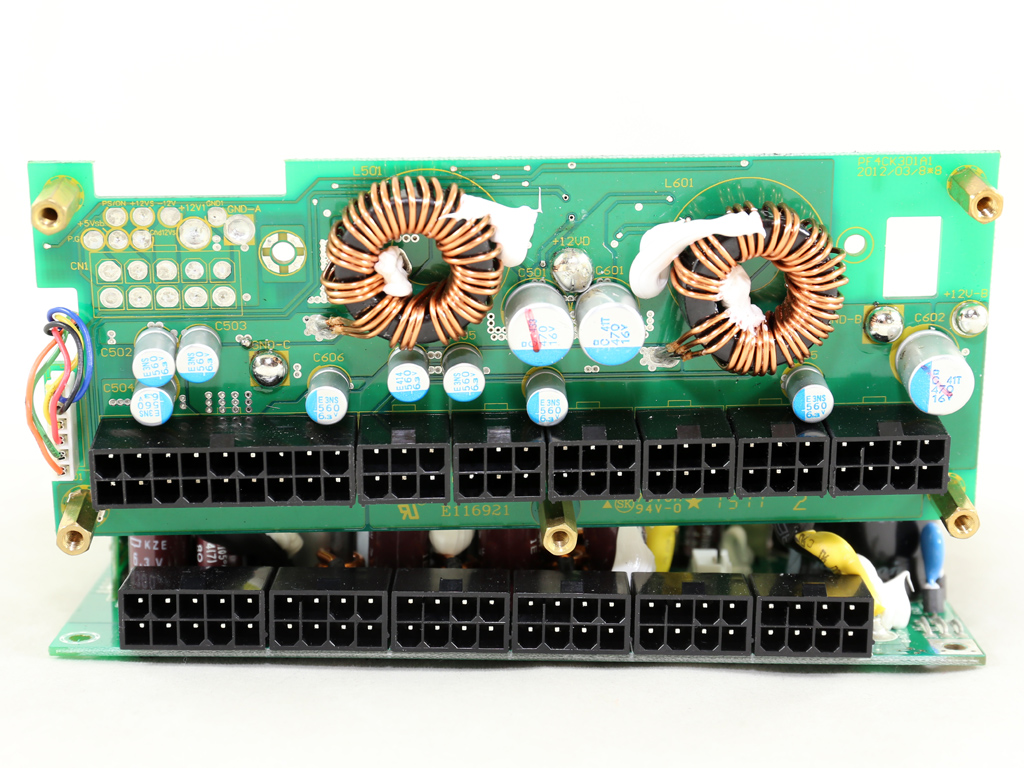
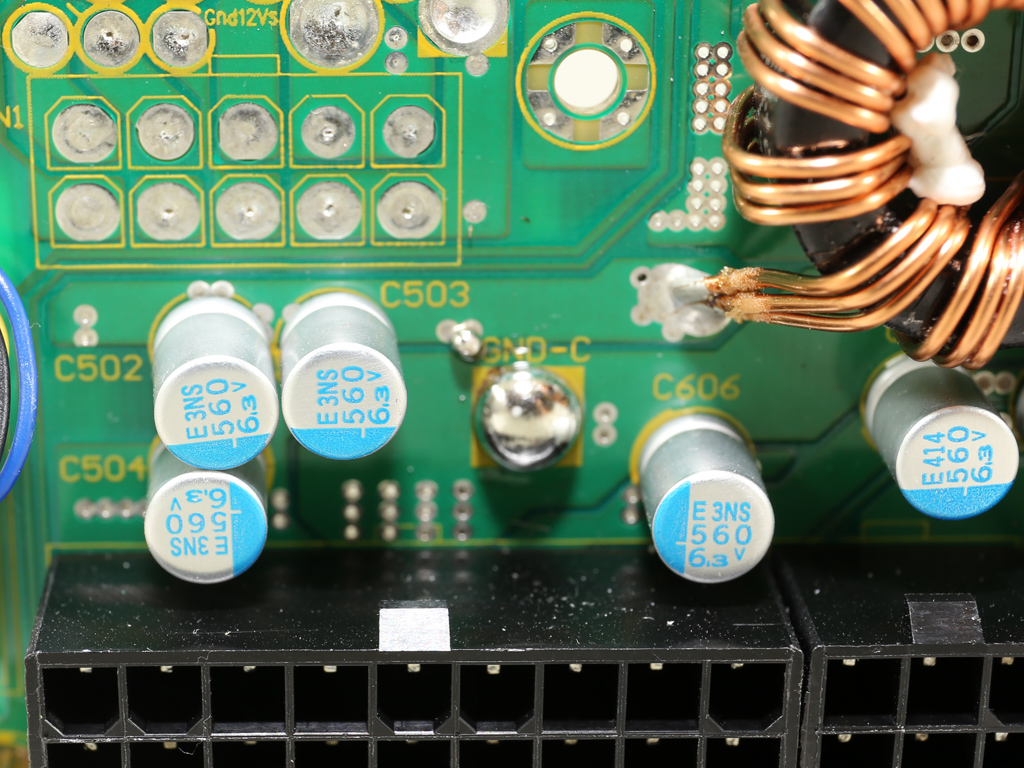
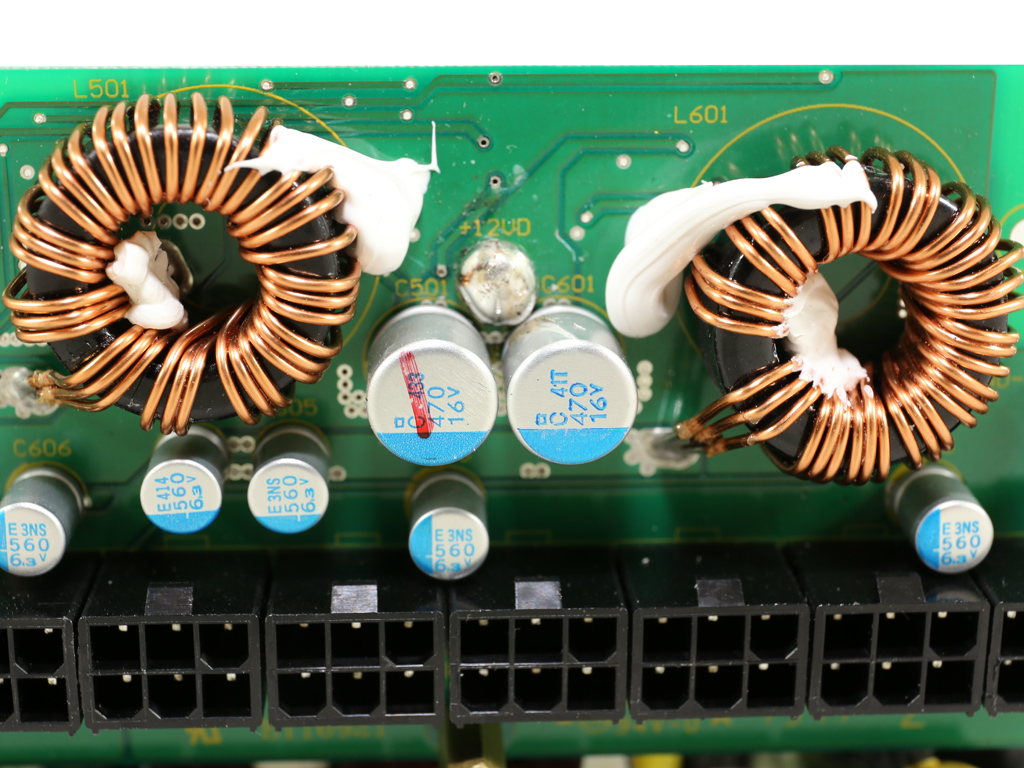
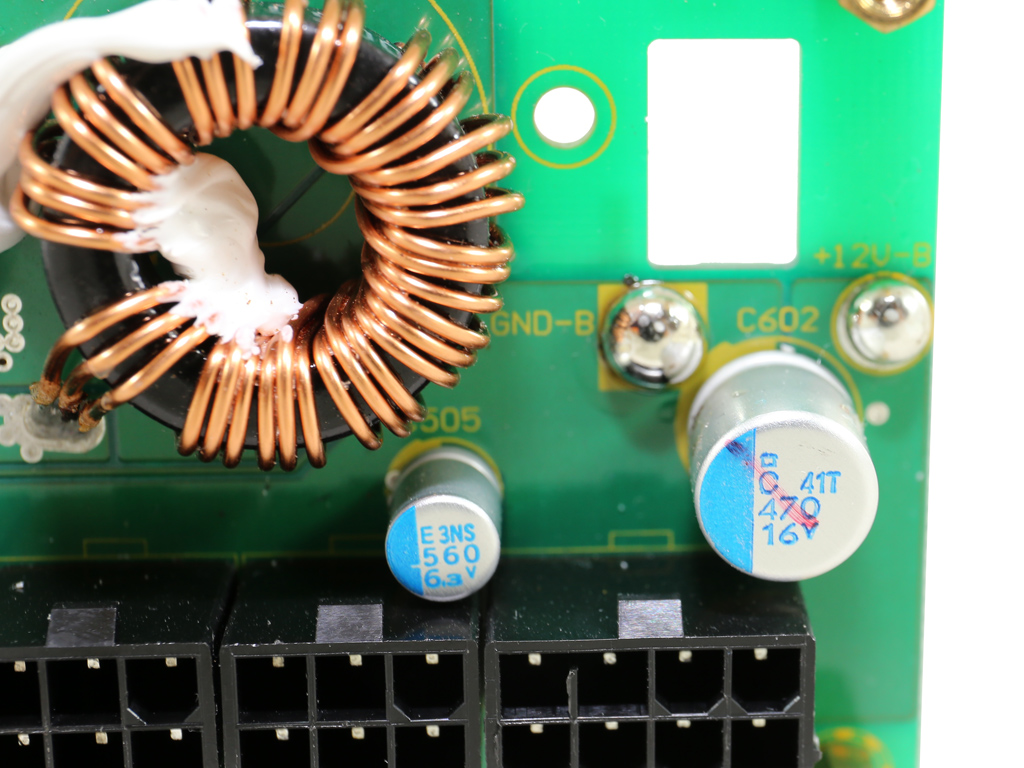
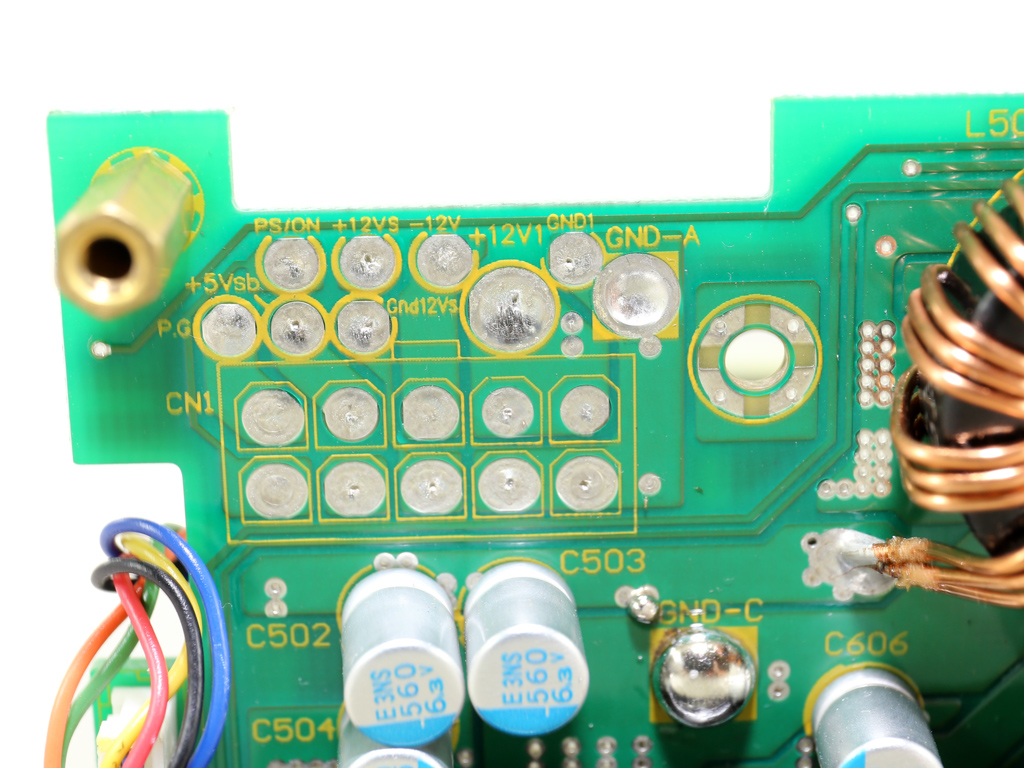
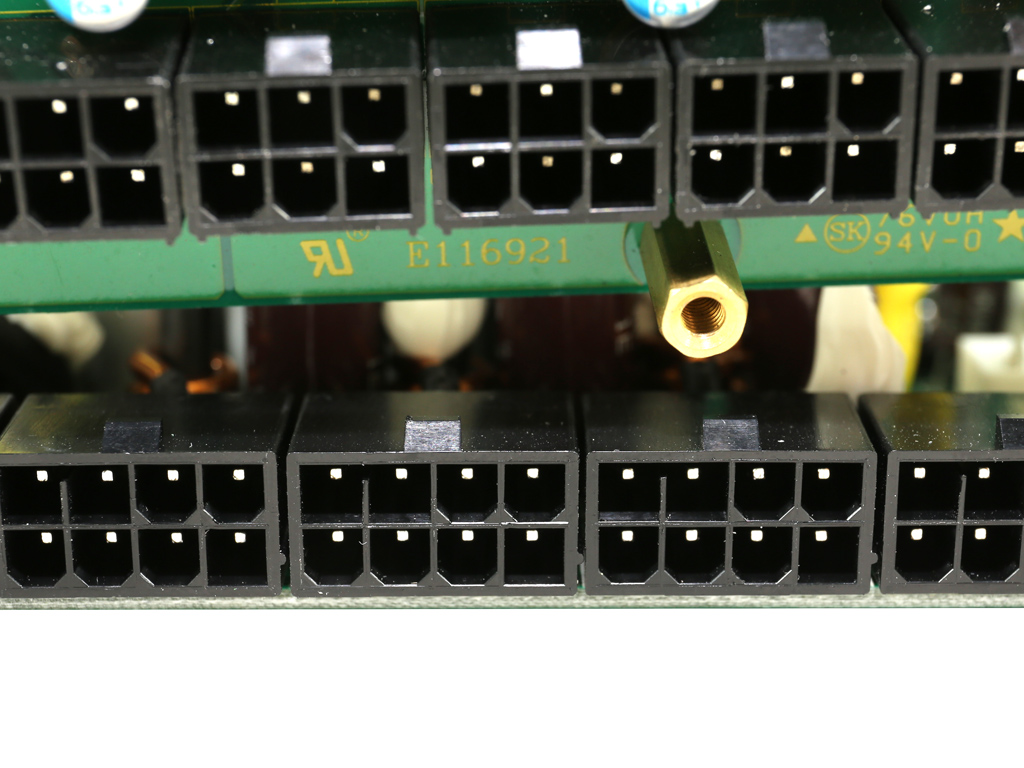
On the front side of the modular board, many Chemi-Con polymer caps filter the rails. The lower modular sockets are directly soldered to the mainboard for decreased voltage drops.
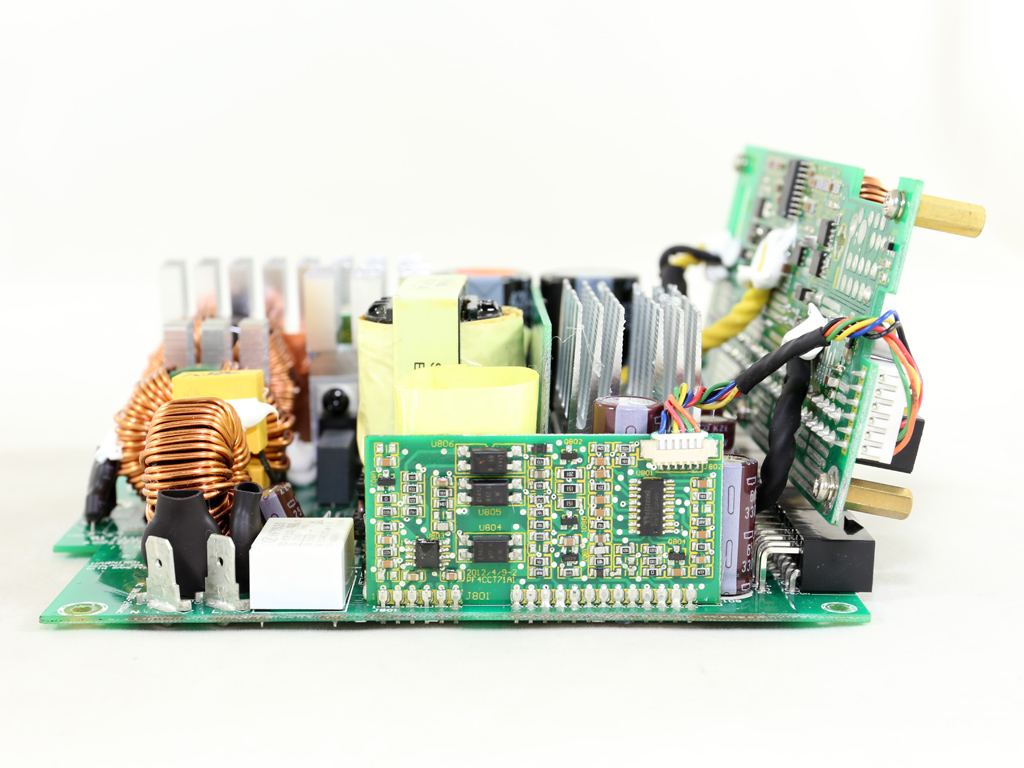
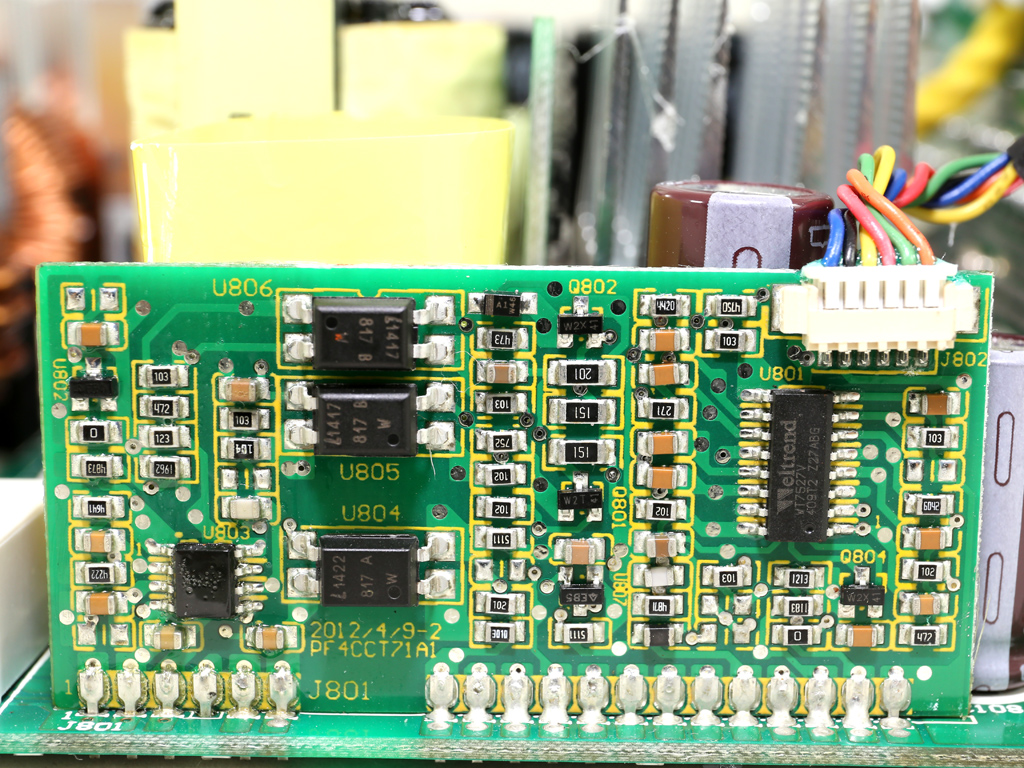
The vertical board in the photos above houses a Weltrend WT7257V supervisor IC and an AS393 dual-voltage comparator. This supervisor IC supports OCP for up to two +12V virtual rails, though XFX's specs only mention one.
The standby PWM controller is an ICE2QR4765 IC.
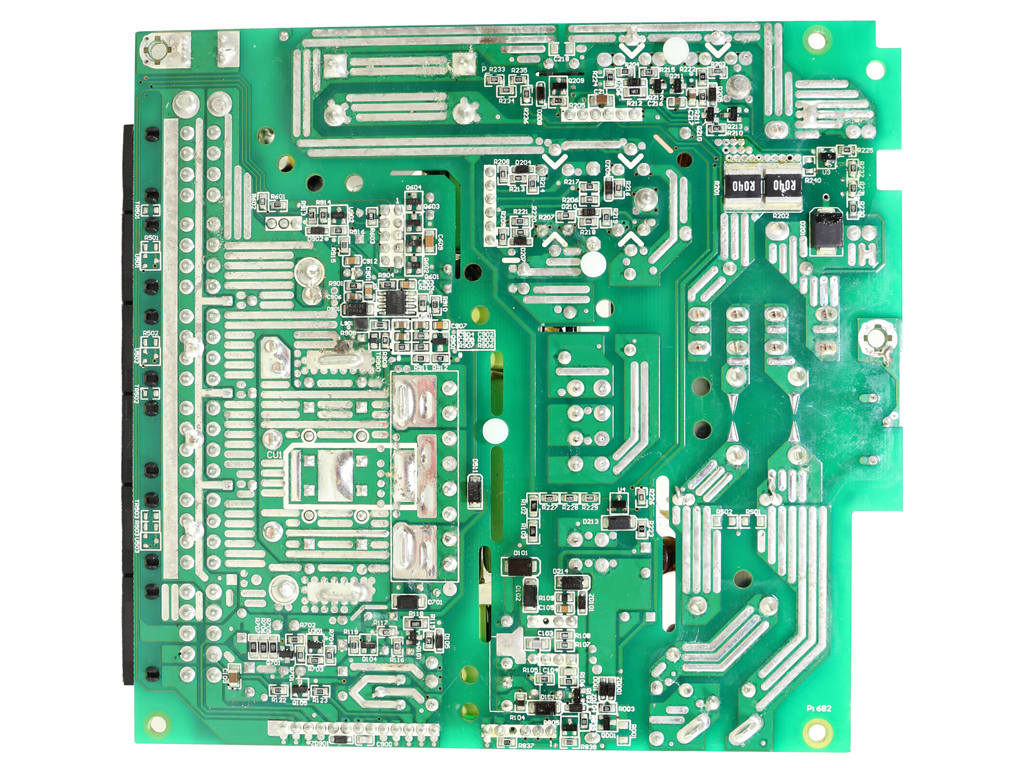
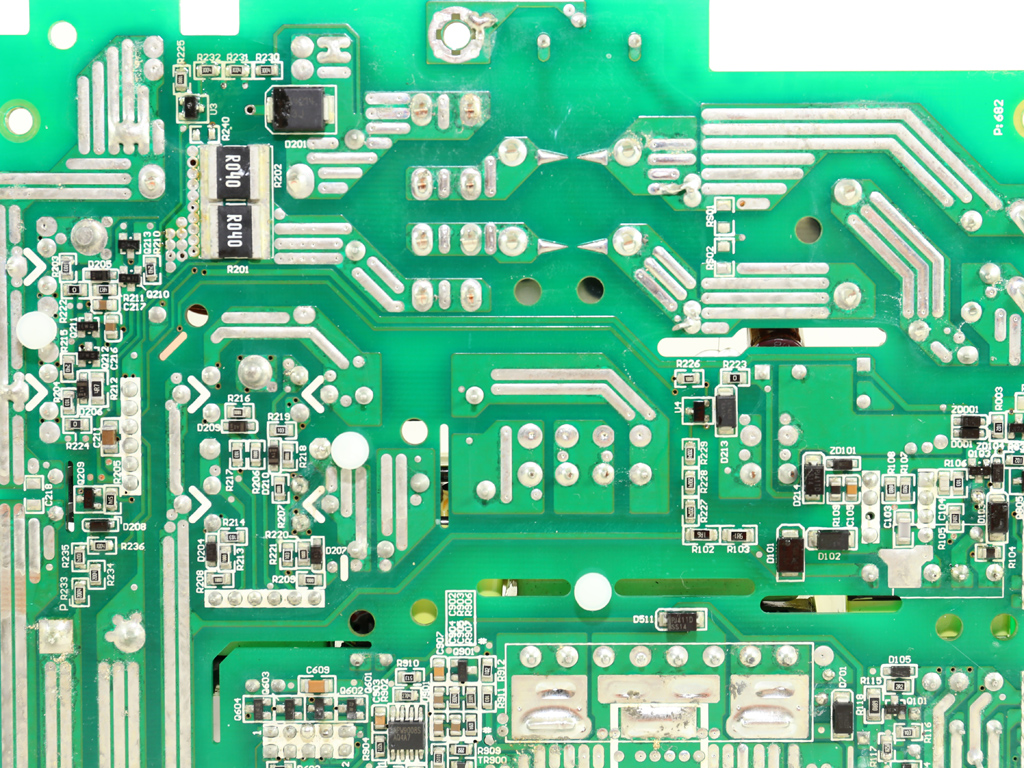
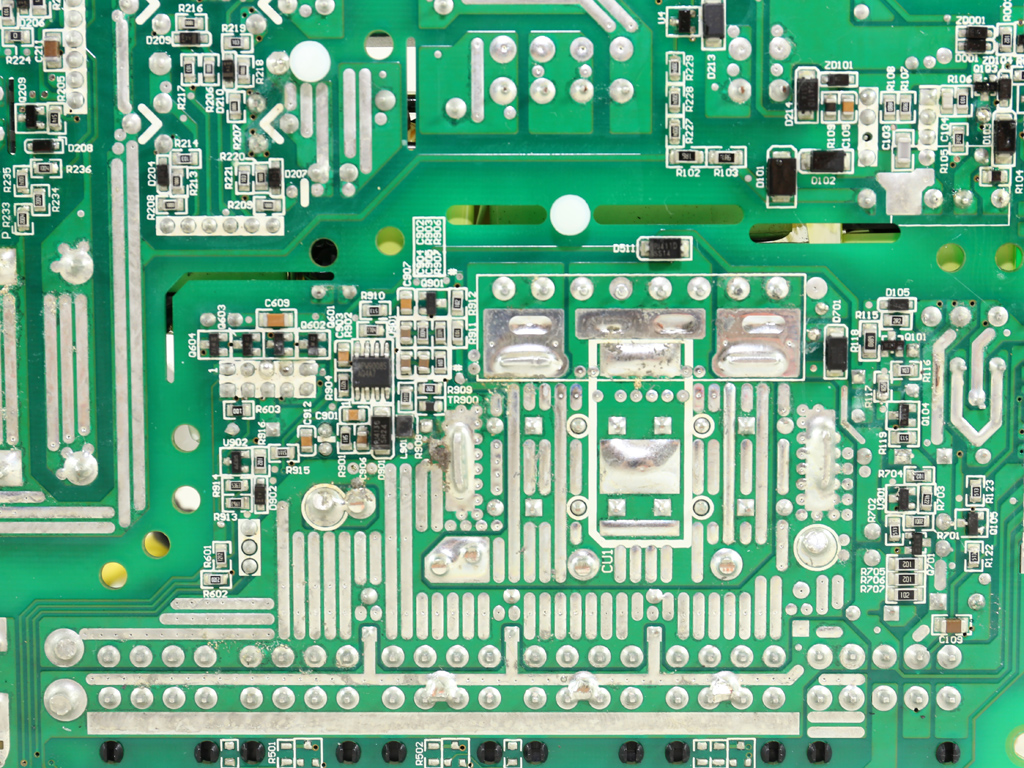
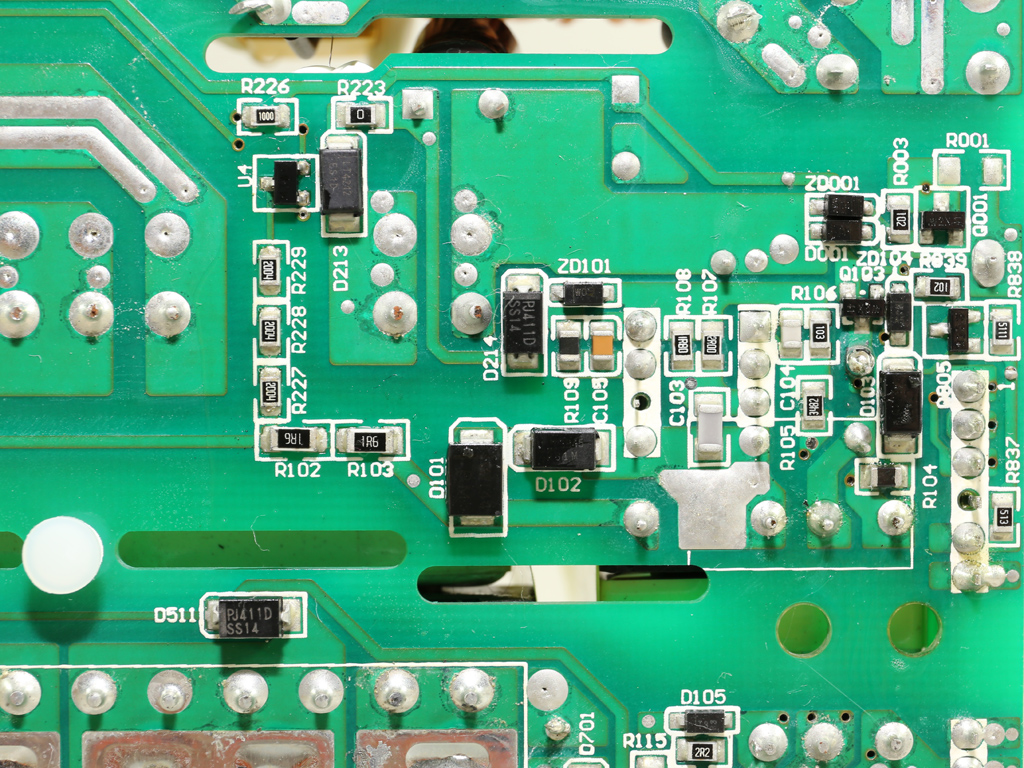
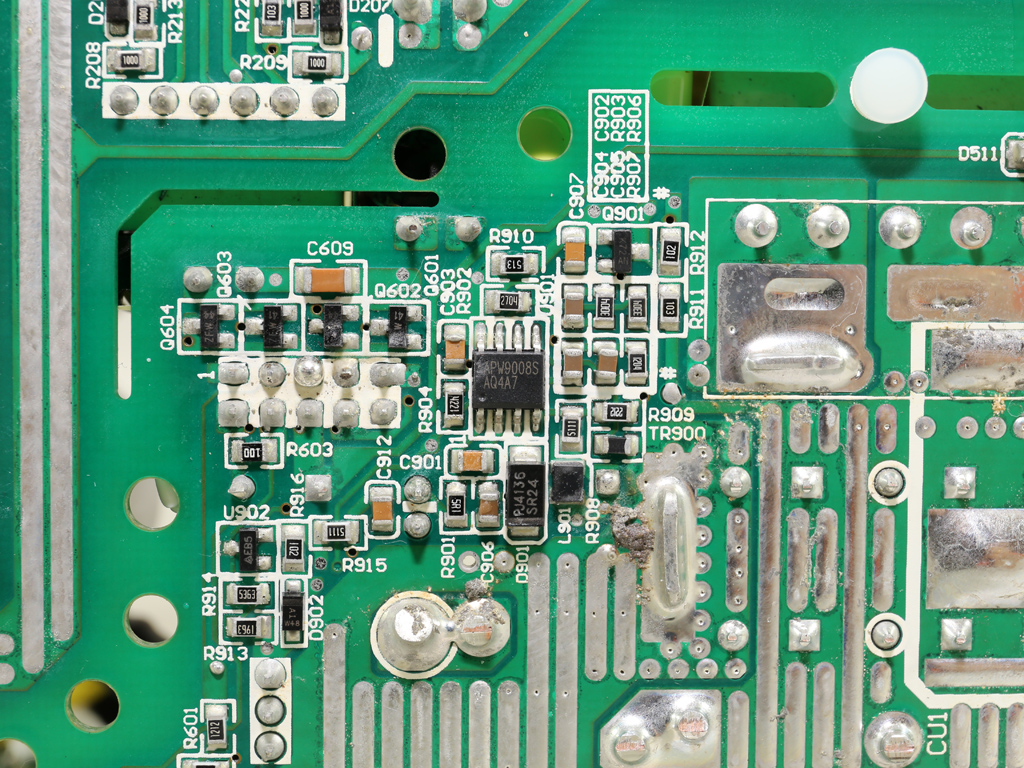
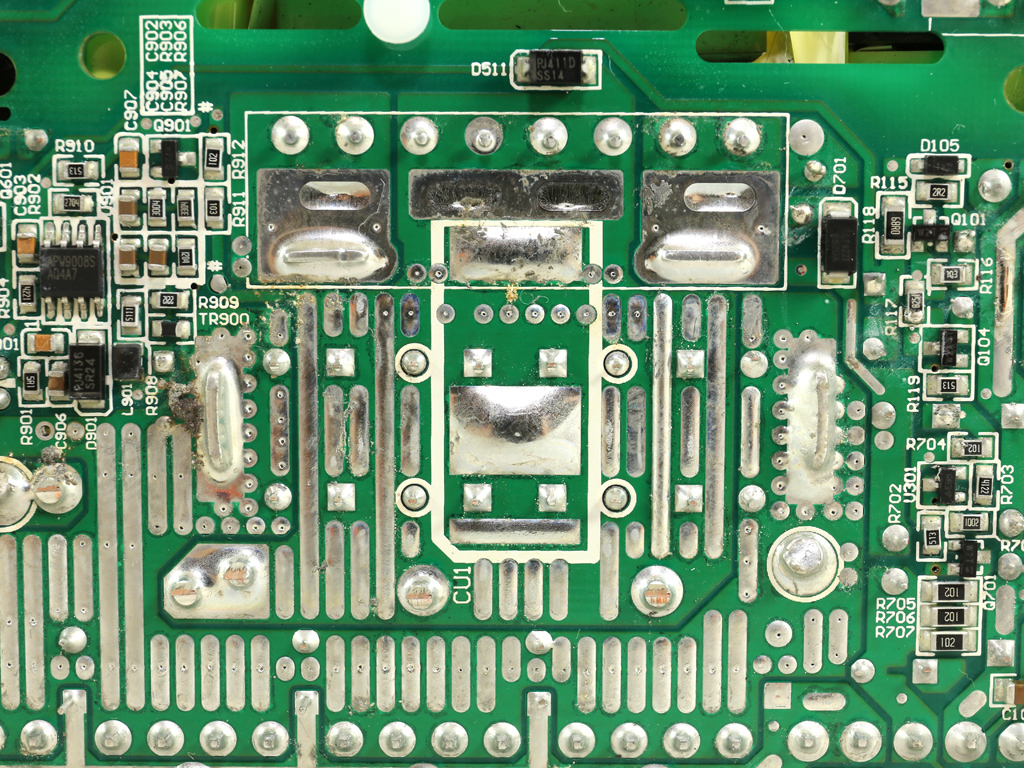
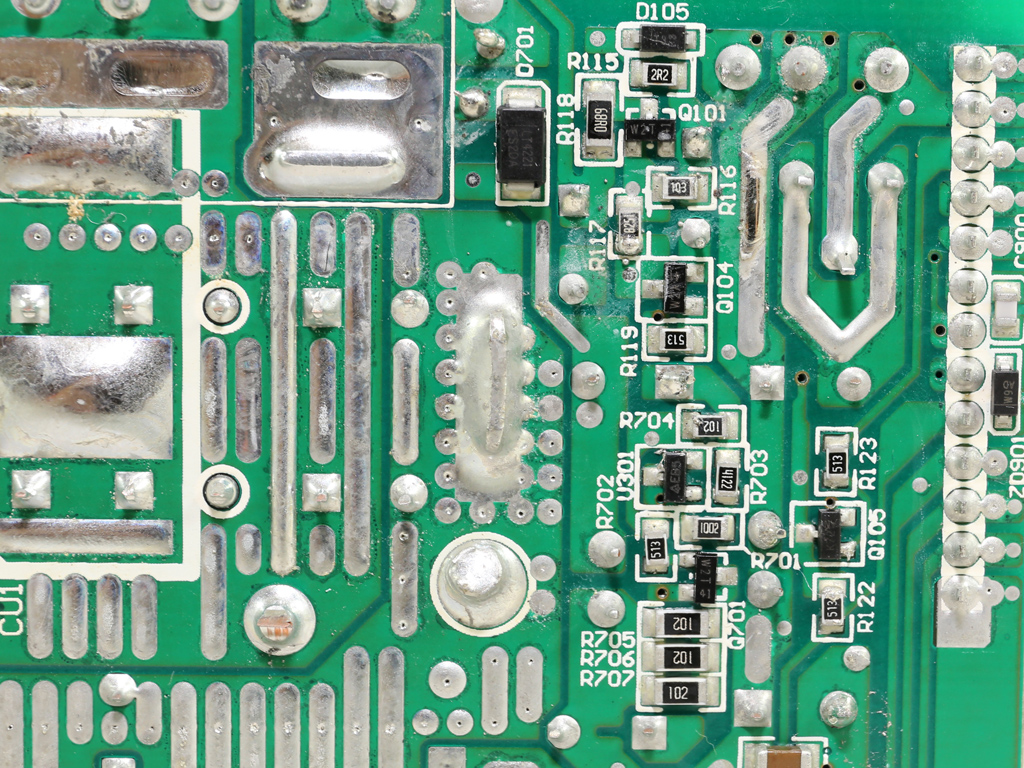
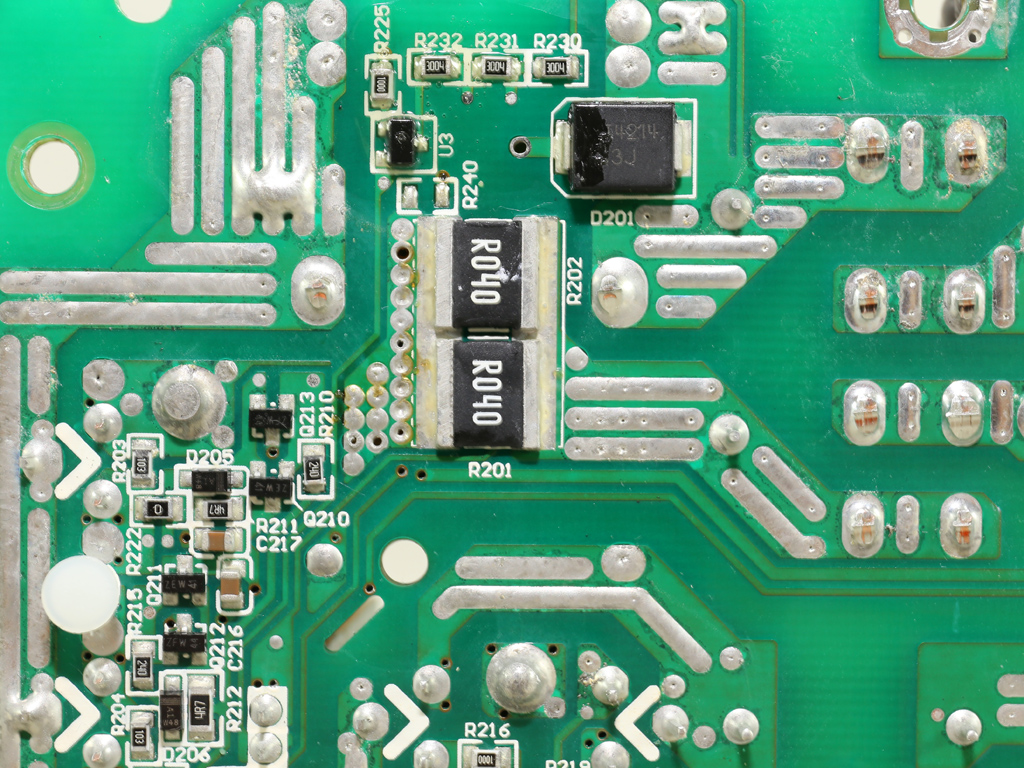
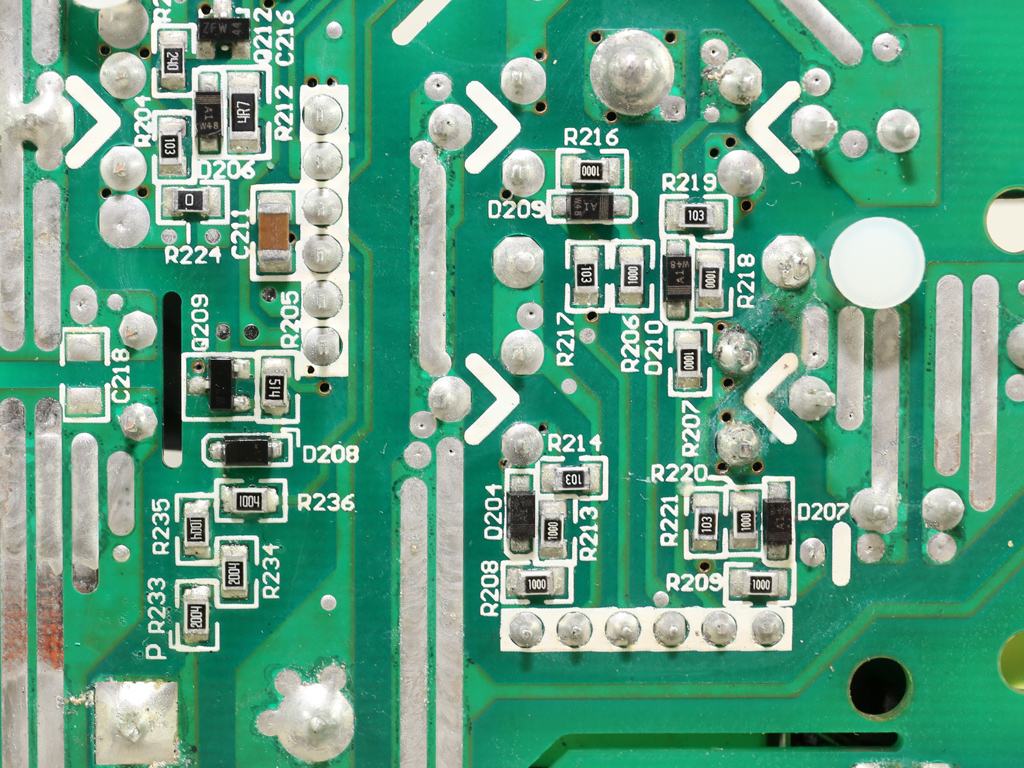
The soldering quality is pretty good, although it's not the best we have seen from Seasonic. At least all component leads are trimmed well.
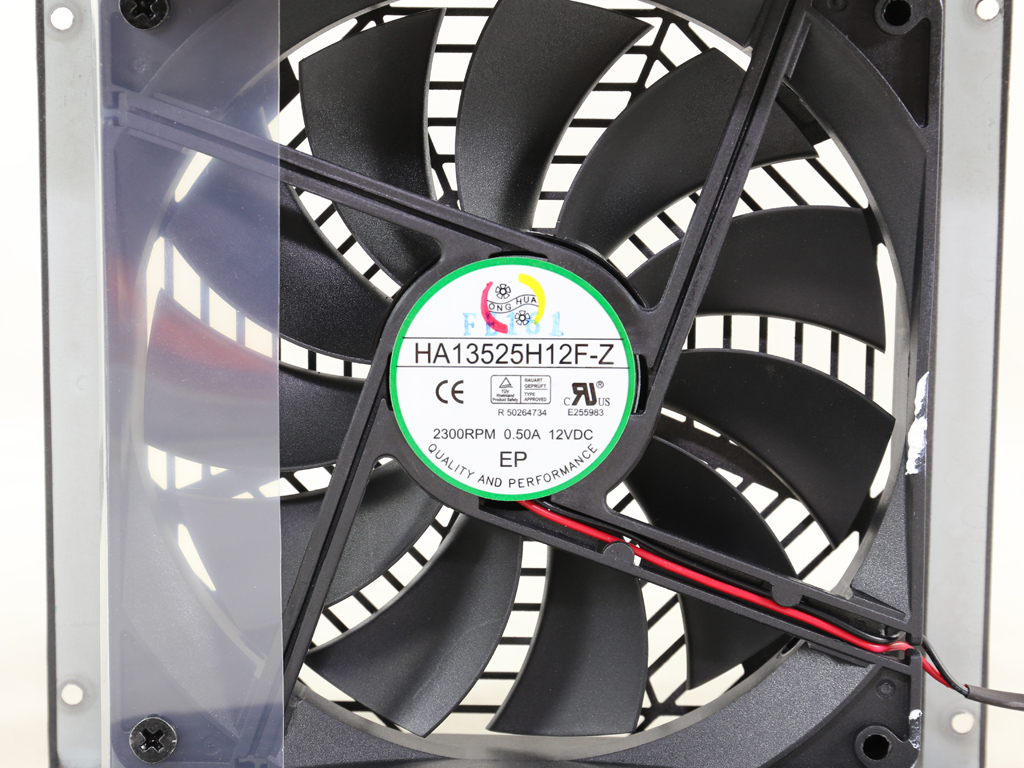
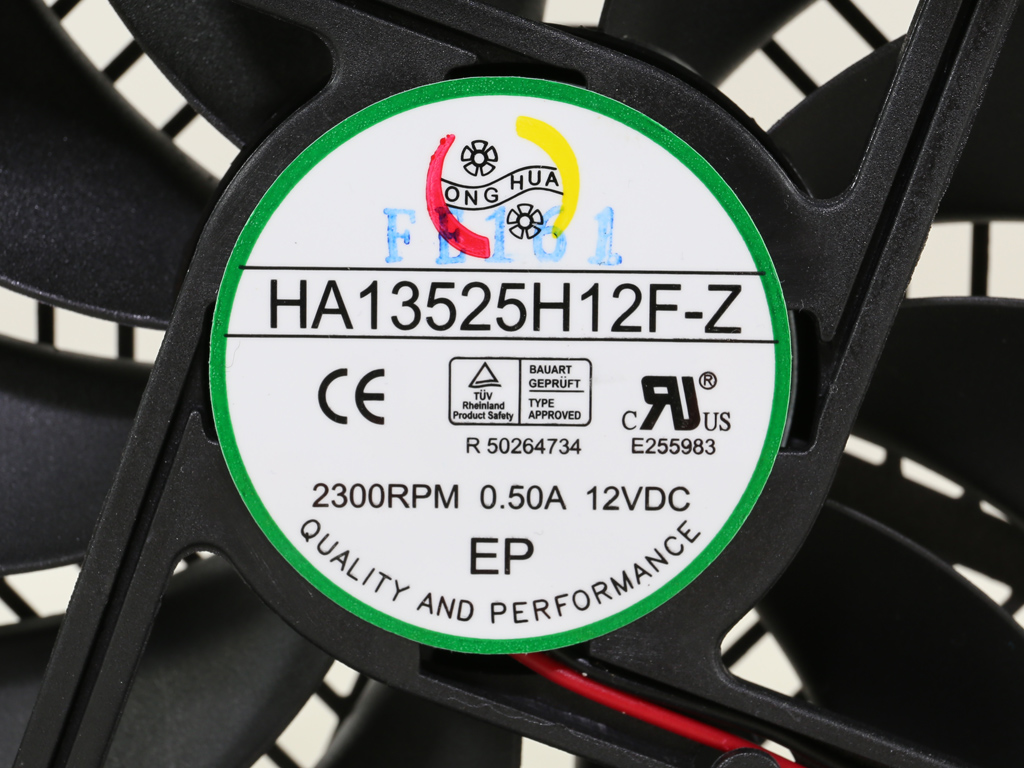
The cooling fan is by Hong Hua and its model number is HA13525H12F-Z (135mm, 12V, 0.5A, 2300 RPM max). It's a strong fan that can get really loud at higher speeds. With semi-passive mode enabled it'll obviously be silent under light loads, but as the load increases the fan starts making its presence felt.
Current page: A Look Inside And Component Analysis
Prev Page Packaging, Contents, Exterior And Cabling Next Page Load Regulation, Hold-Up Time And Inrush Current
Aris Mpitziopoulos is a contributing editor at Tom's Hardware, covering PSUs.
-
turkey3_scratch How come on the ripple page the 5VSB rail always stays under 15mv (except CL1) but on the crossloads page the 5VSB ripple graph is completely blue, hence greater than 30mv the entire time? Also, you have two "and"s in a row on Page 5. Anyway, what I love about Seasonic is they don't fall short in any category. This PSU excels everywhere, I guess except fan noise, of course.Reply -
turkey3_scratch Reply18155380 said:Nice. Any chance you might have a look at the budget XT's?
^^ Yes please review one of these. Though he only reviews units that the companies actually send to him, so it could be they don't want the XT units to get reviewed, so it'd probably have to be bought retail. -
apazeus I've had the 550w version since around October. At one point it was powering an FX-8350 and a 290X with no hiccups. (Nowadays it's paired with a 6600K and a GTX 1080, uses was less juice.) Nice PSUs.Reply -
Aris_Mp I cannot explain why ripple at 5VSB during the Crossload tests is higher than the high-temperature tests. This is strange indeed.Reply
As for the XTs I will try to find one. -
gofasterstripes Lol XTR and XT - Someone call Shimano and tell them their electric groupset is looking a big fat!Reply -
Shankovich Excellent review. Could you guys possibly redo the Corsair HX 750i and up with the new review parameters? Really interested to see how it is in more detail now.Reply -
damric "All XFX PSUs are made by Seasonic"Reply
Not quite. These are built by Hydance.
http://www.orionpsudb.com/news/the-mystery-of-xfx-budget-xt-line-solved-oem-and-platform-discovered -
Aris_Mp When I state that a unit is made by Seasonic (or any other OEM) it doesn't necessary mean that it is made in its own factories. It is a common practice OEMs to outsource their products to other factories if they cannot meet demand (or in case they want a more affordable production line). However still the original design and the specs are set by the original designer.Reply
Many other models of various OEMs are also made in other factories but there is no safe way to know it without having info from the OEM itself.
Finally, this specific article states about the XFX XT units: "If the available information is correct, XFX XT is designed by Seasonic, but the manufacturing is outsourced to Shenzhen Rui Sheng Yuan just like the Hydance. "
As you can see there is an "if" at the beginning of the sentence. In any case, Seasonic is also behind the XT line. Given that this is an XTR review though, I thought it would be better to spare all above and just state that all XFX PSUs are made by Seasonic and not dive into such detail mentioning the outsourcing of XT line, for which there is no solid information.
Given the opportunity I would like to mention the great work that Orion does and also thank him for the tip about the KM3S platform of the XTR-850 unit. I will try to find some details about the actual differences between the KM3 and KM3S platforms. -
Math Geek i got REAL happy for second there thinking this was one of the budget XTFR units. been waiting for someone, anyone out there to review one so we can see how it performs. they are priced awesome and if they perform even average, they will be worth the low cost for mainstream pc'sReply
either way, nice review :) always solid work
